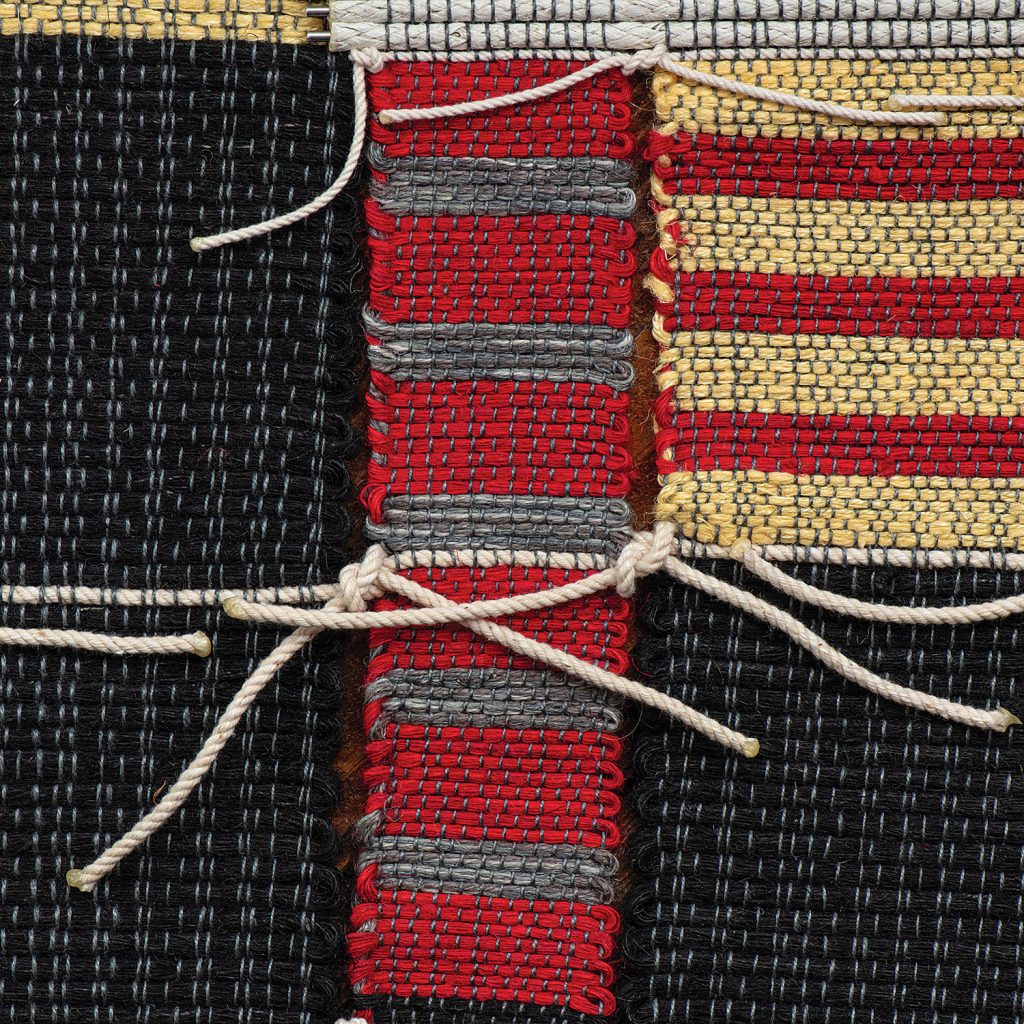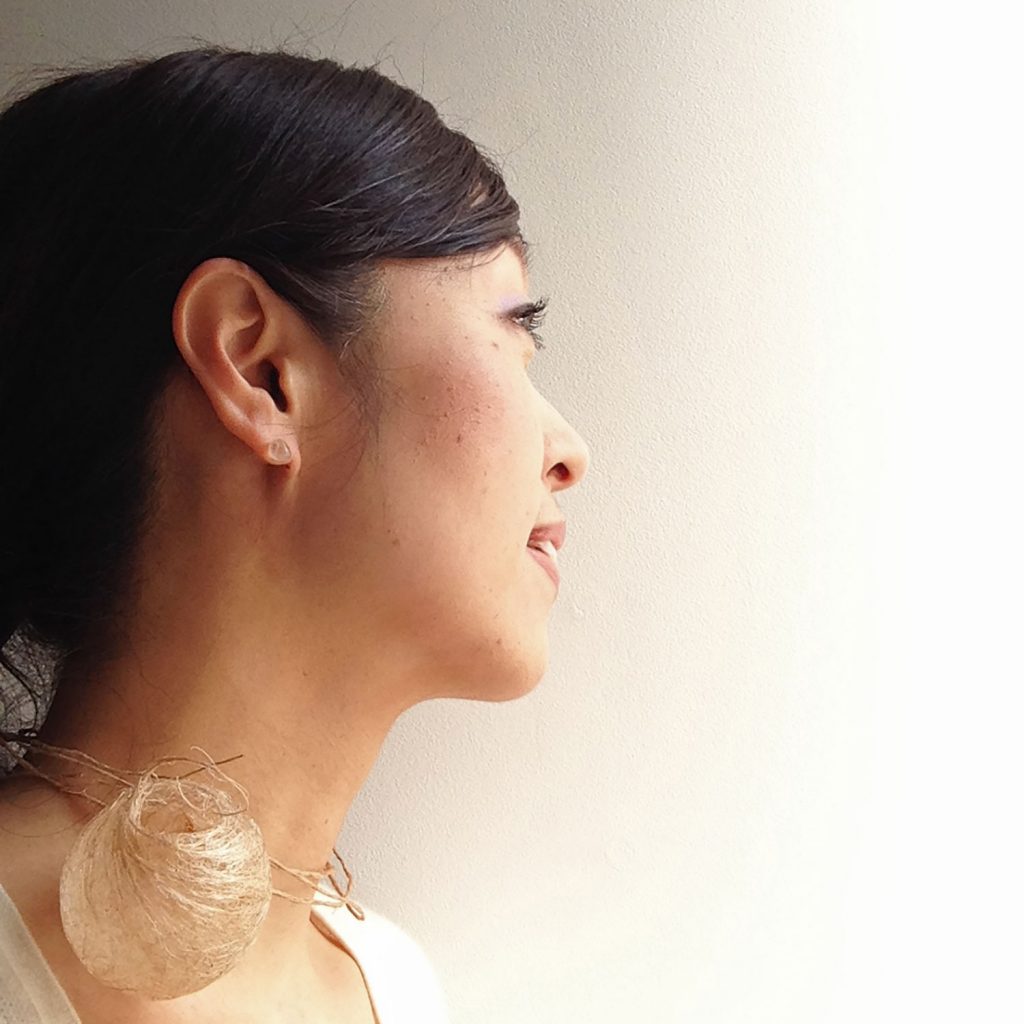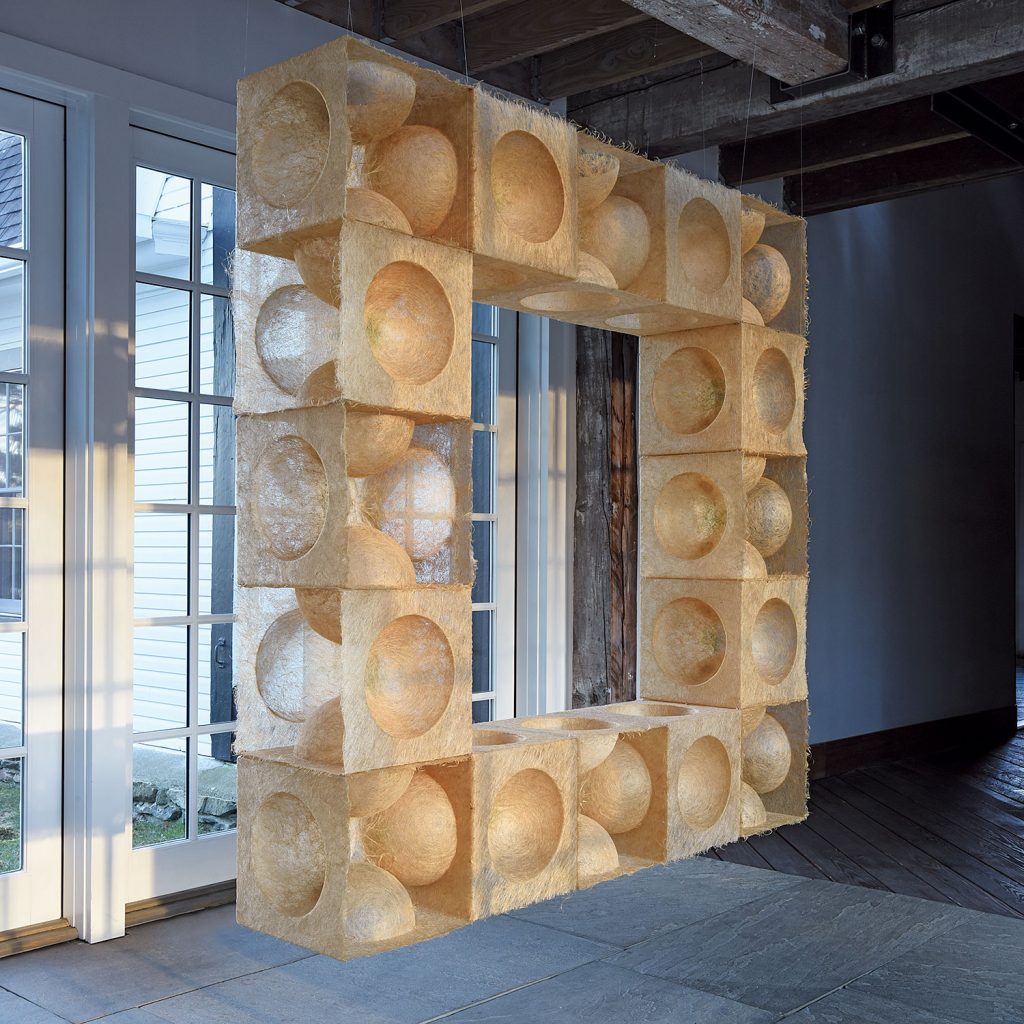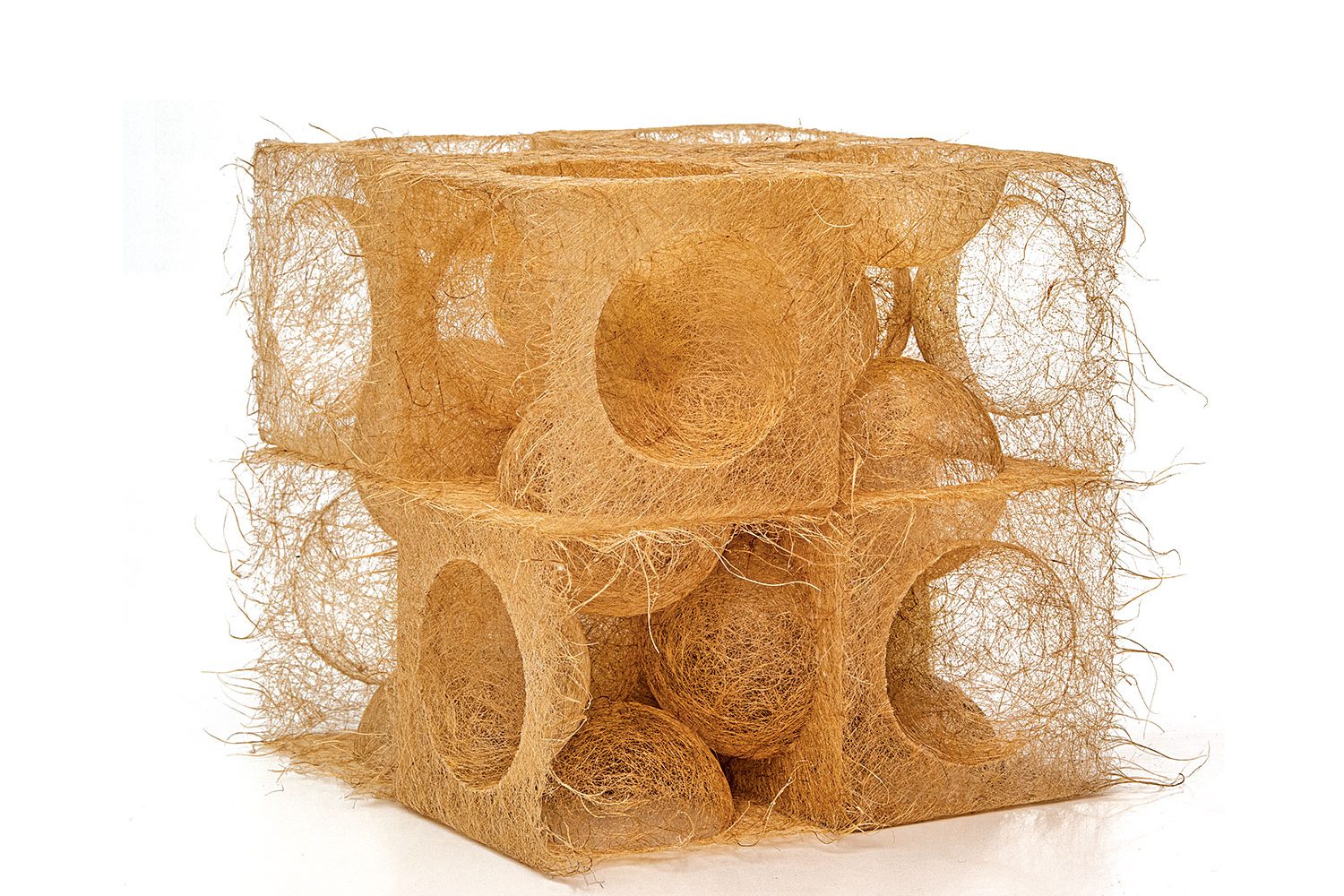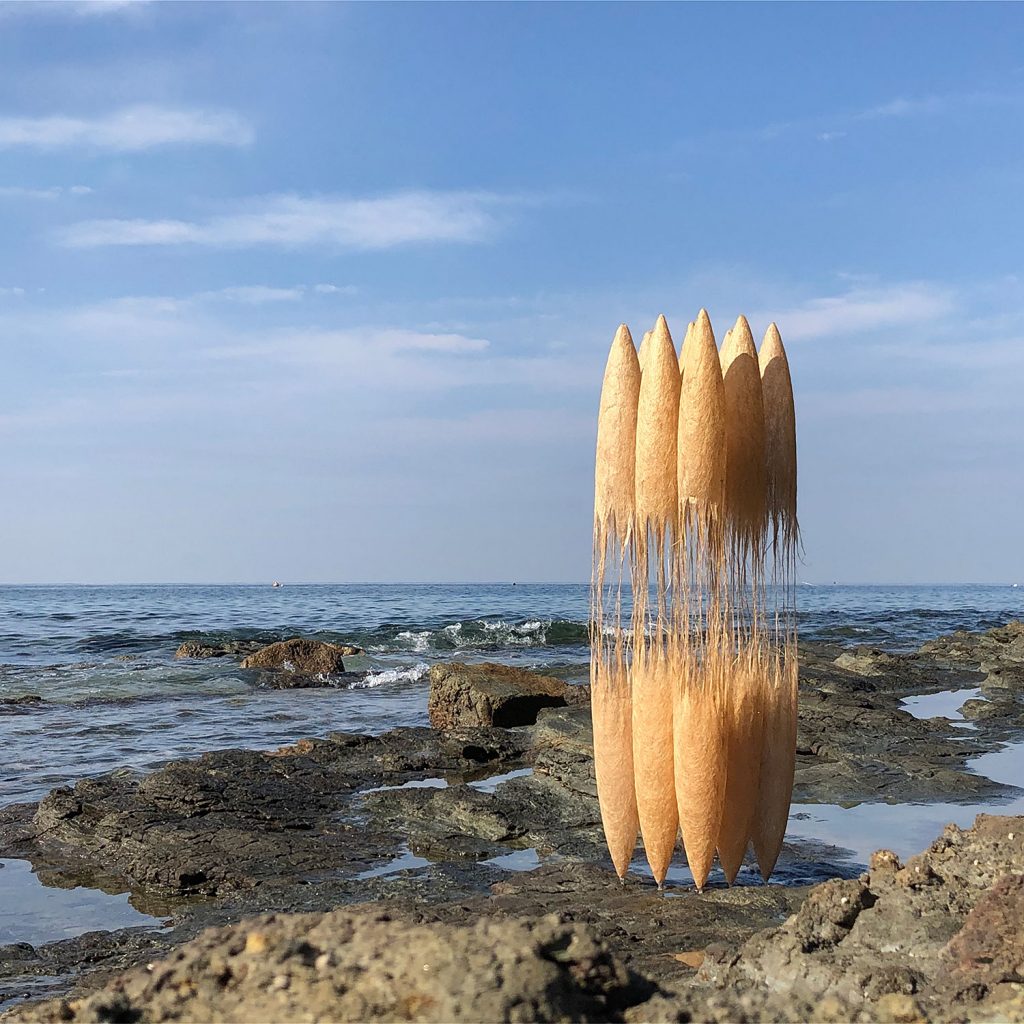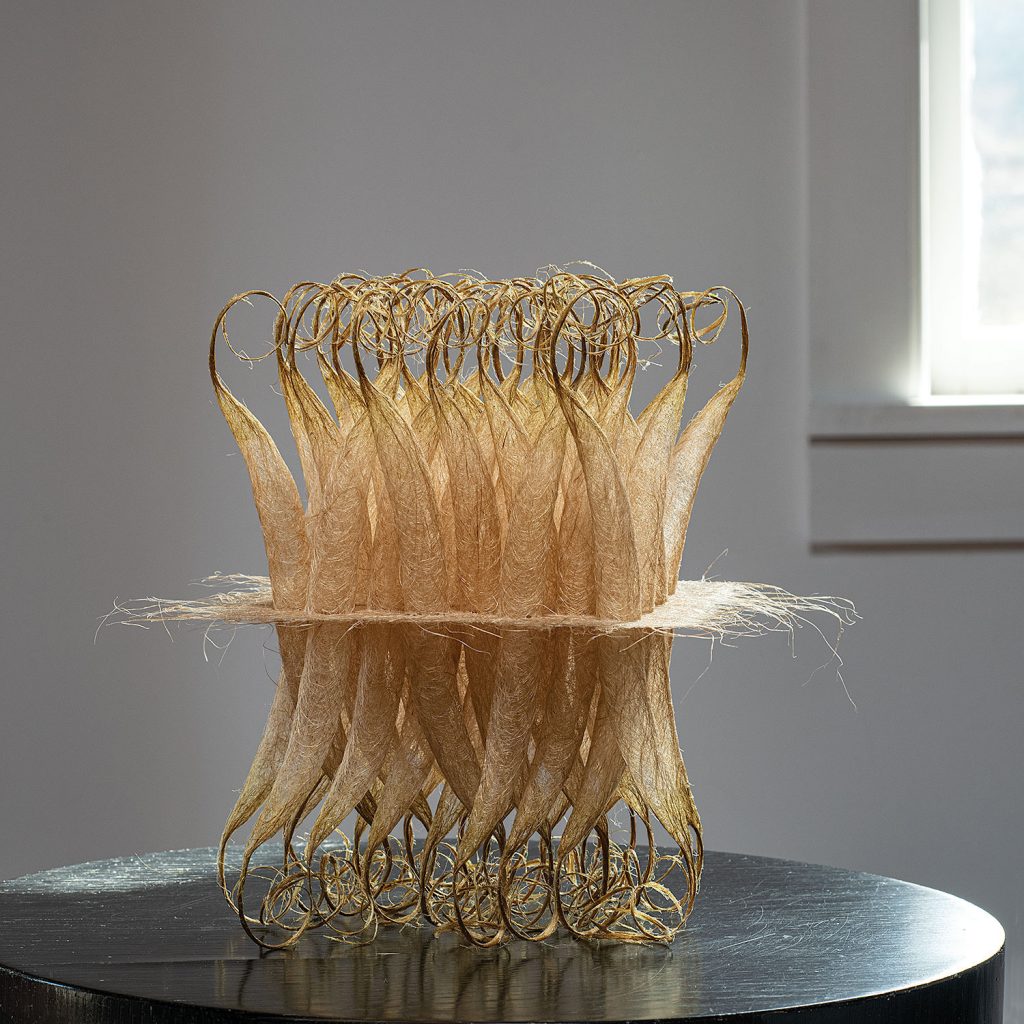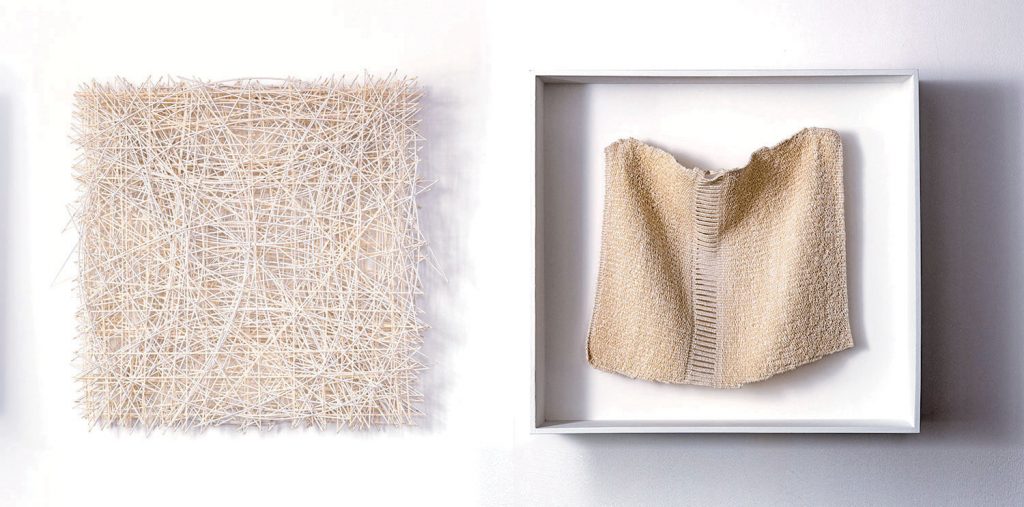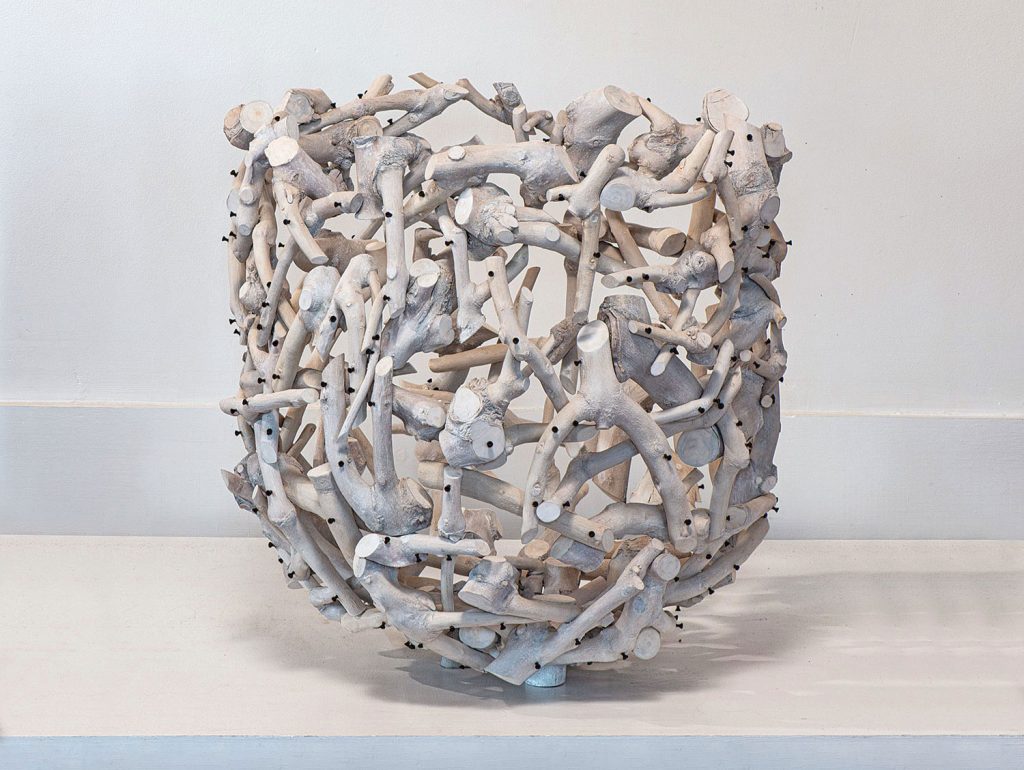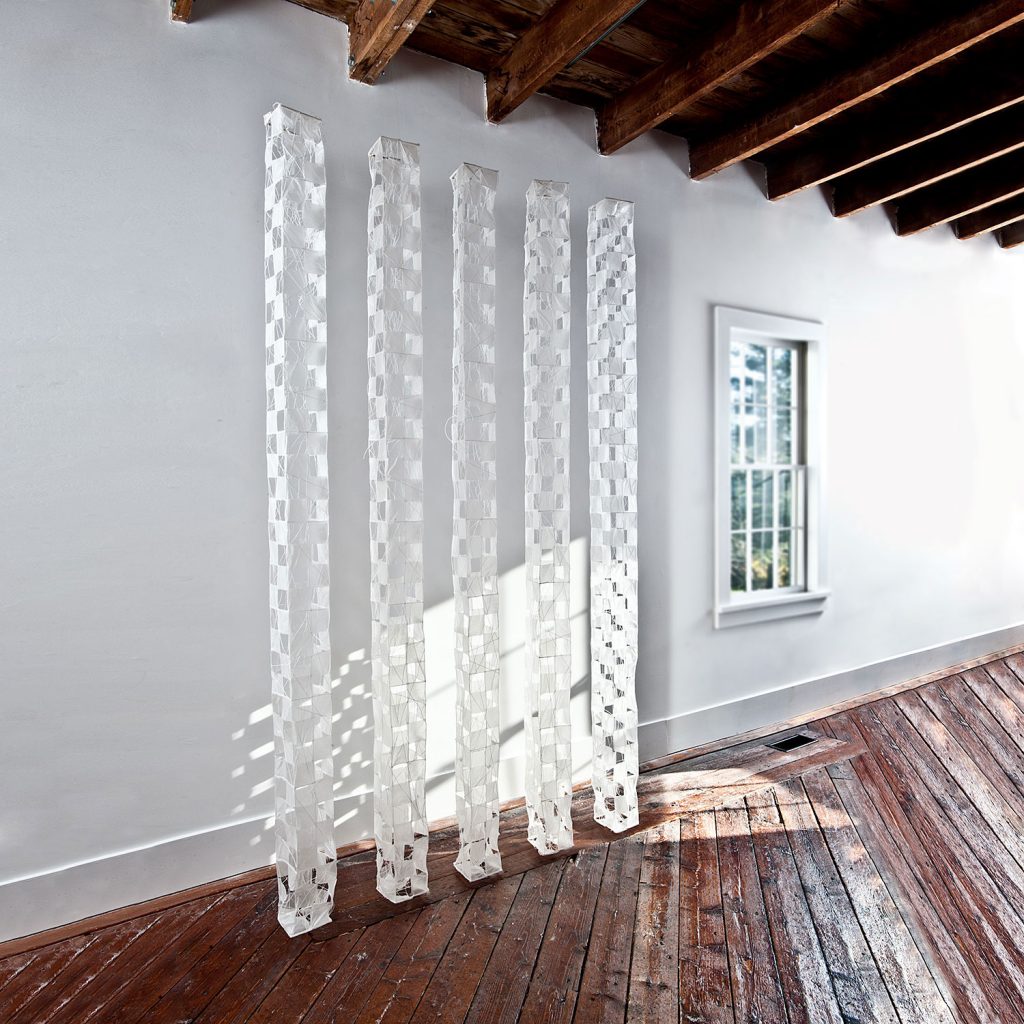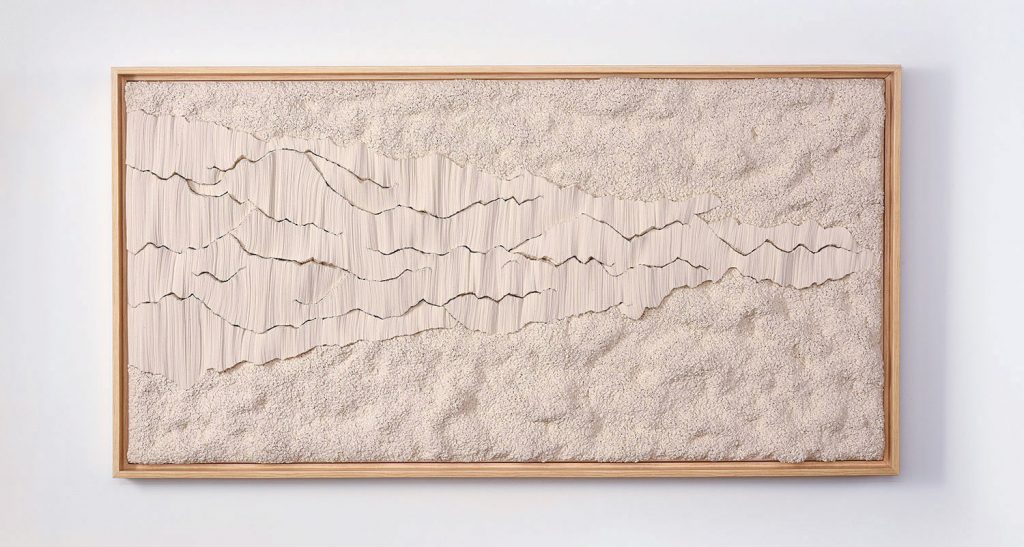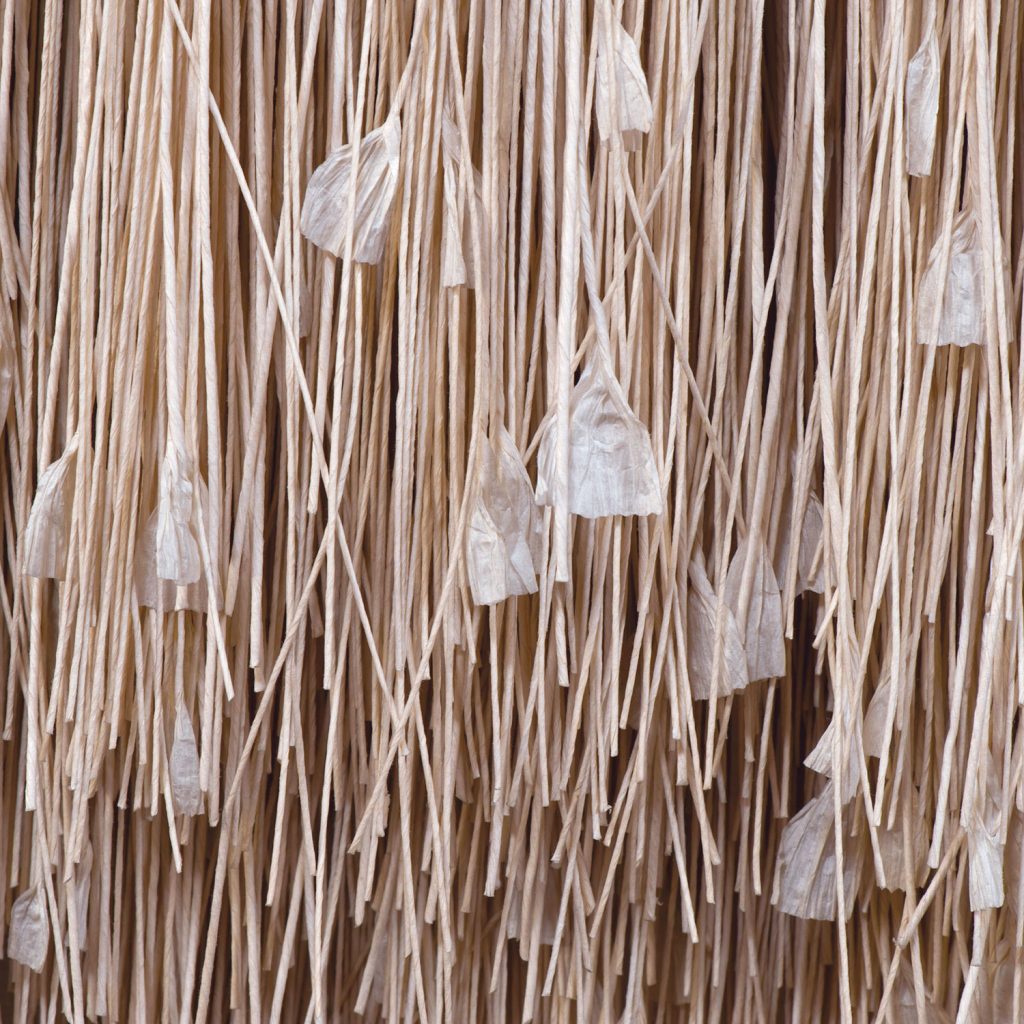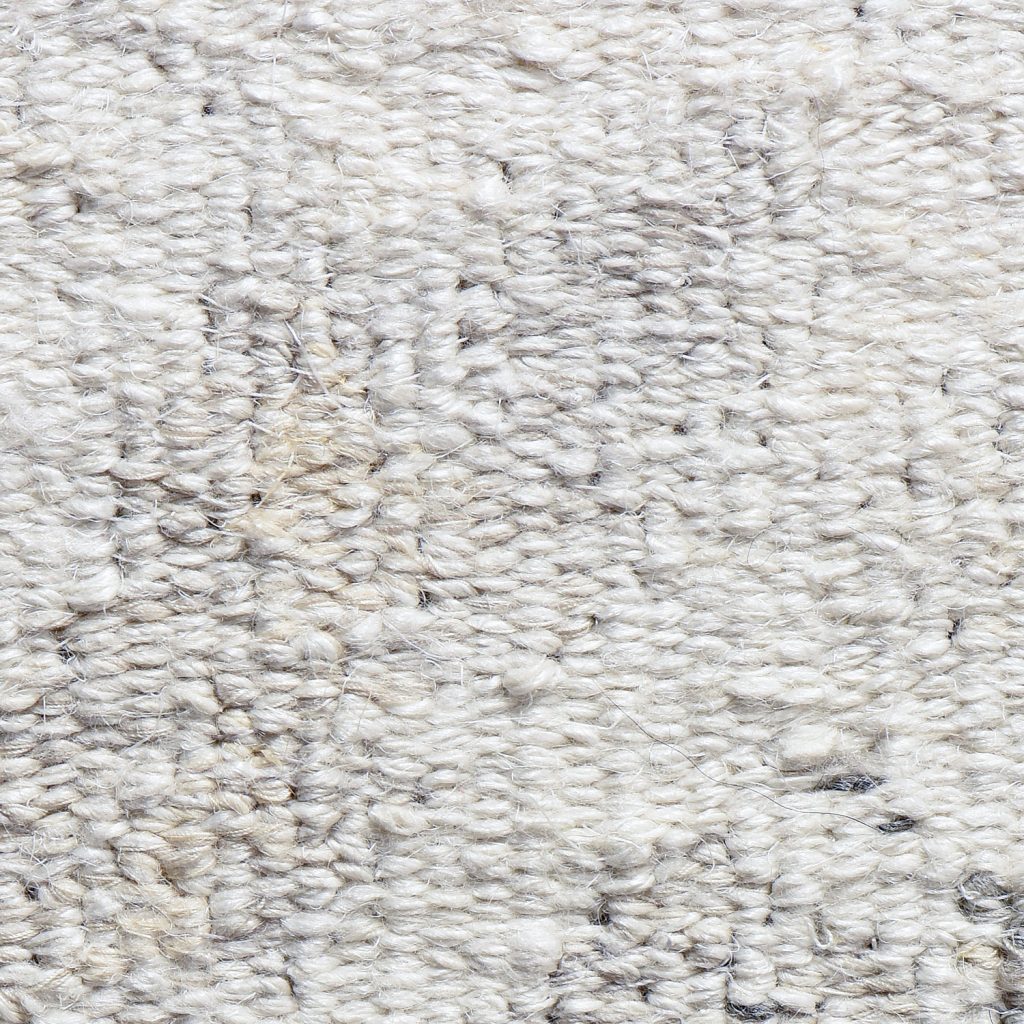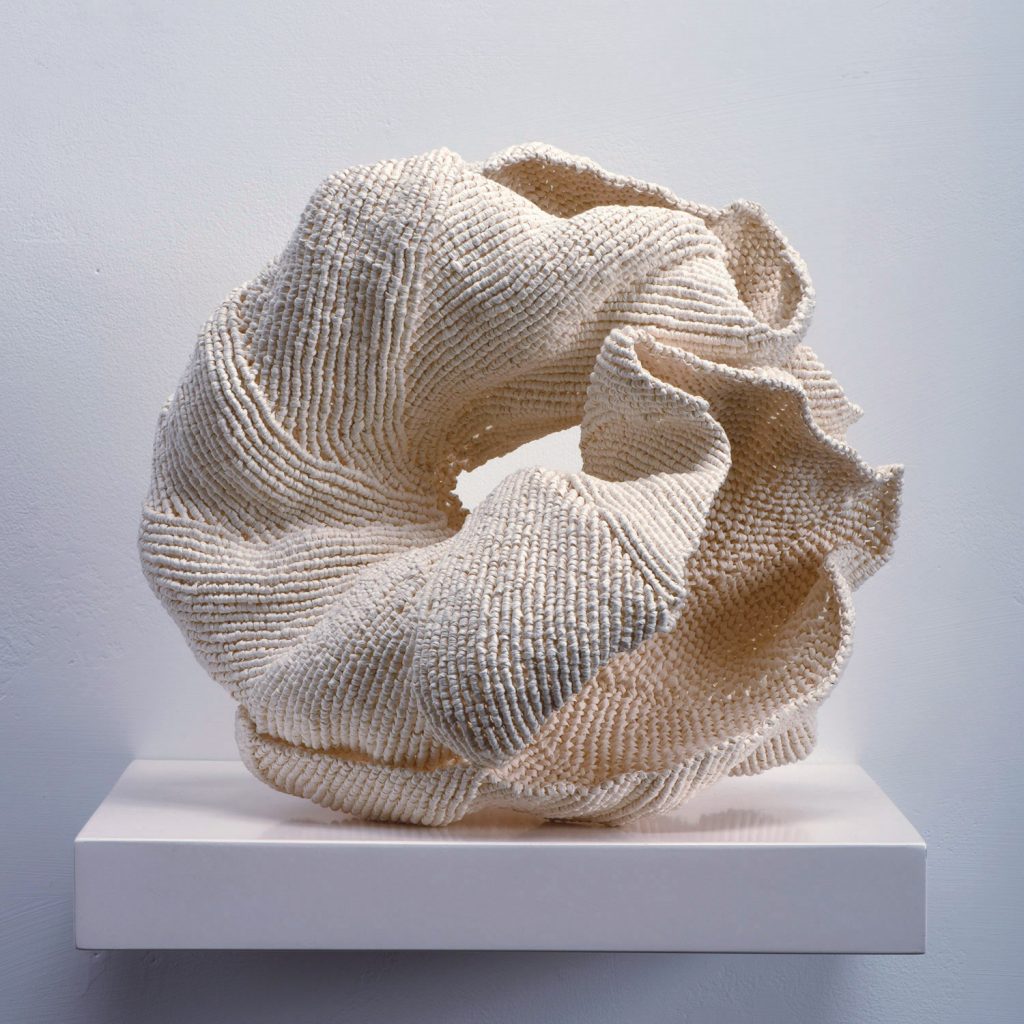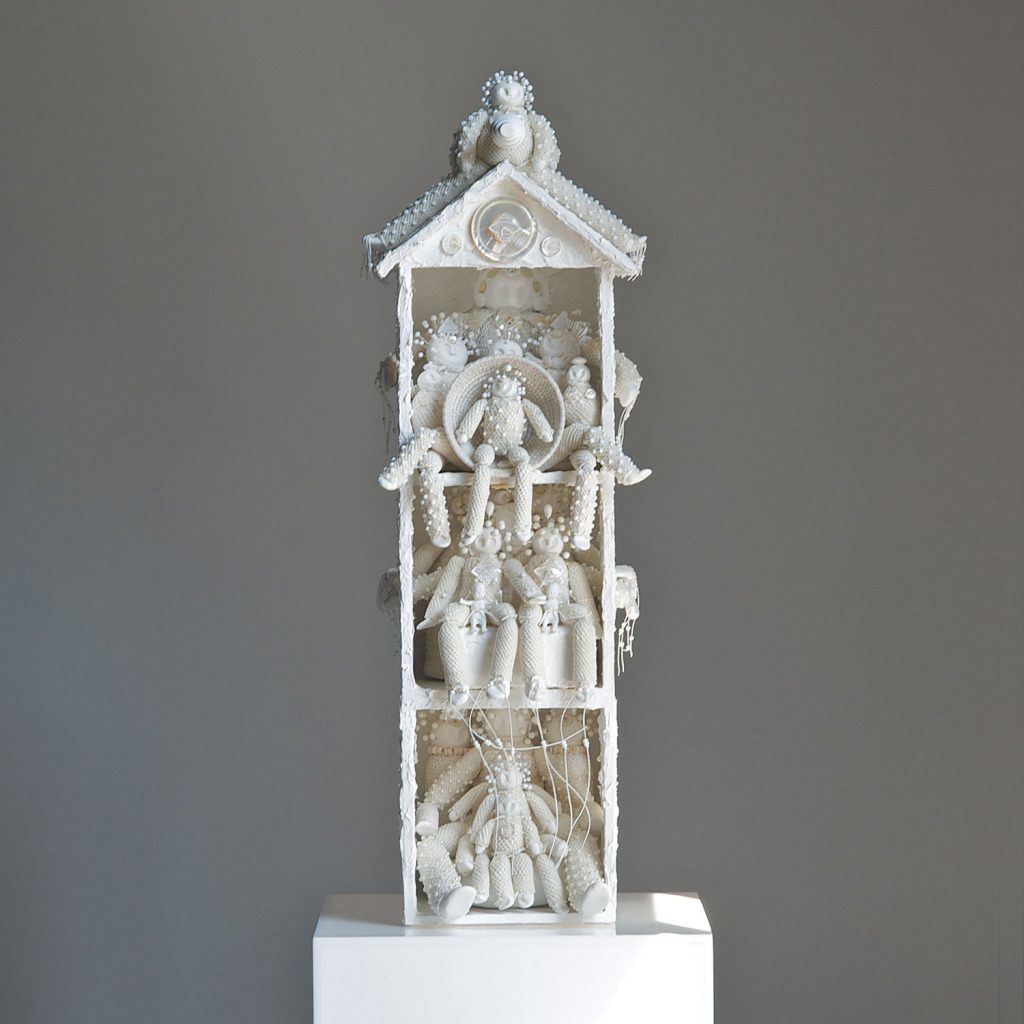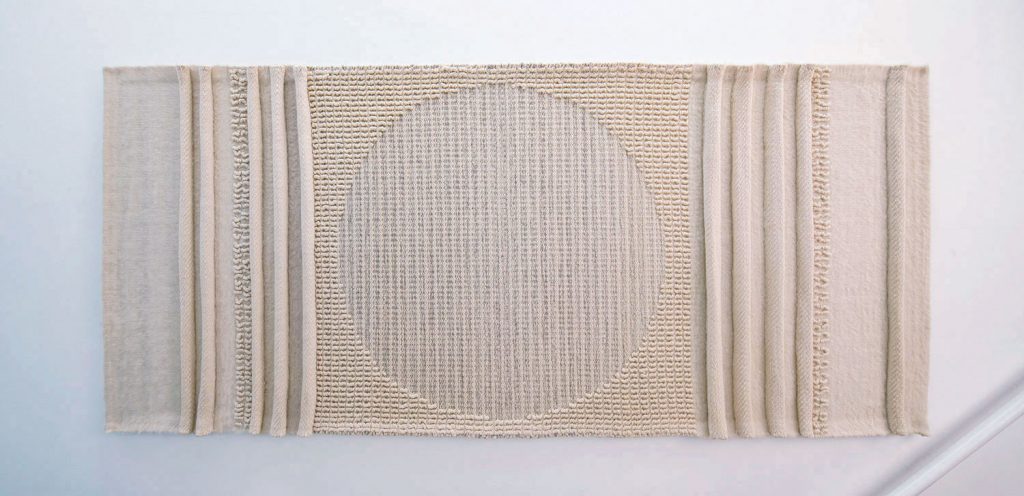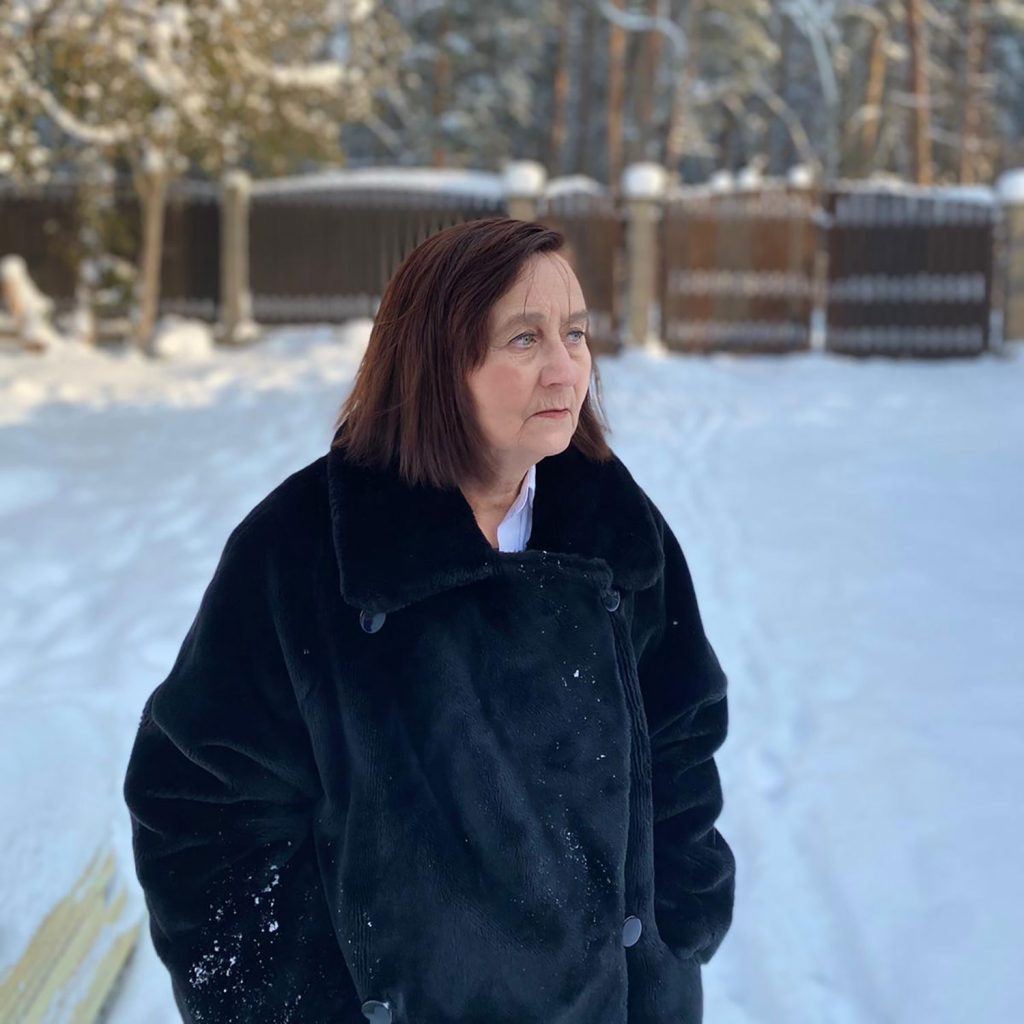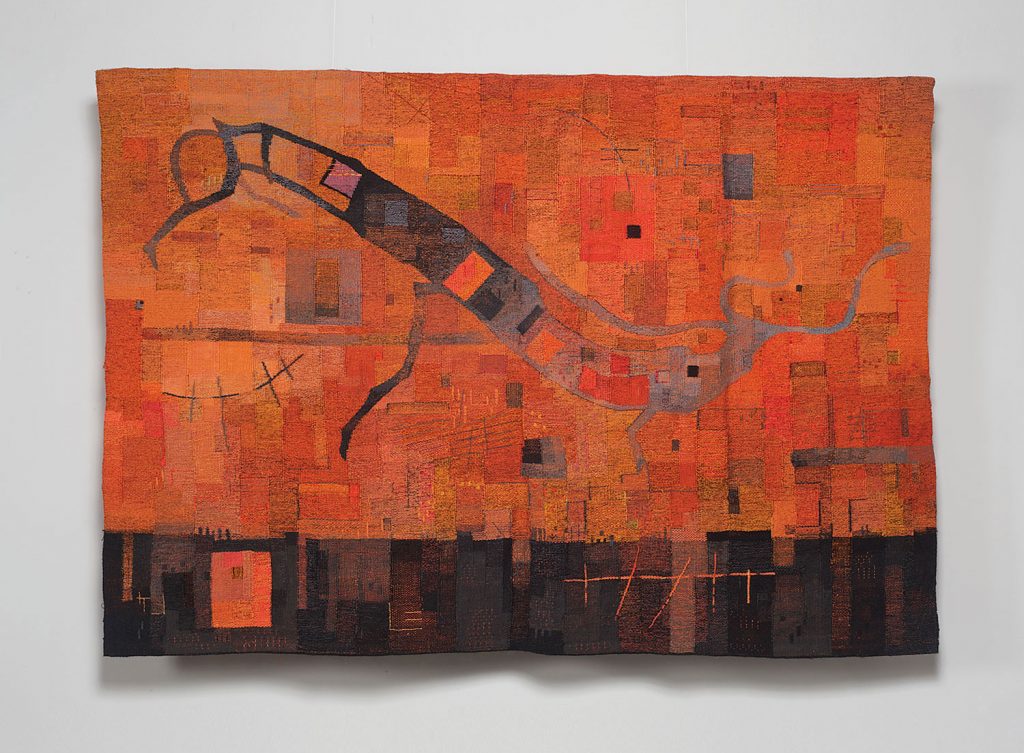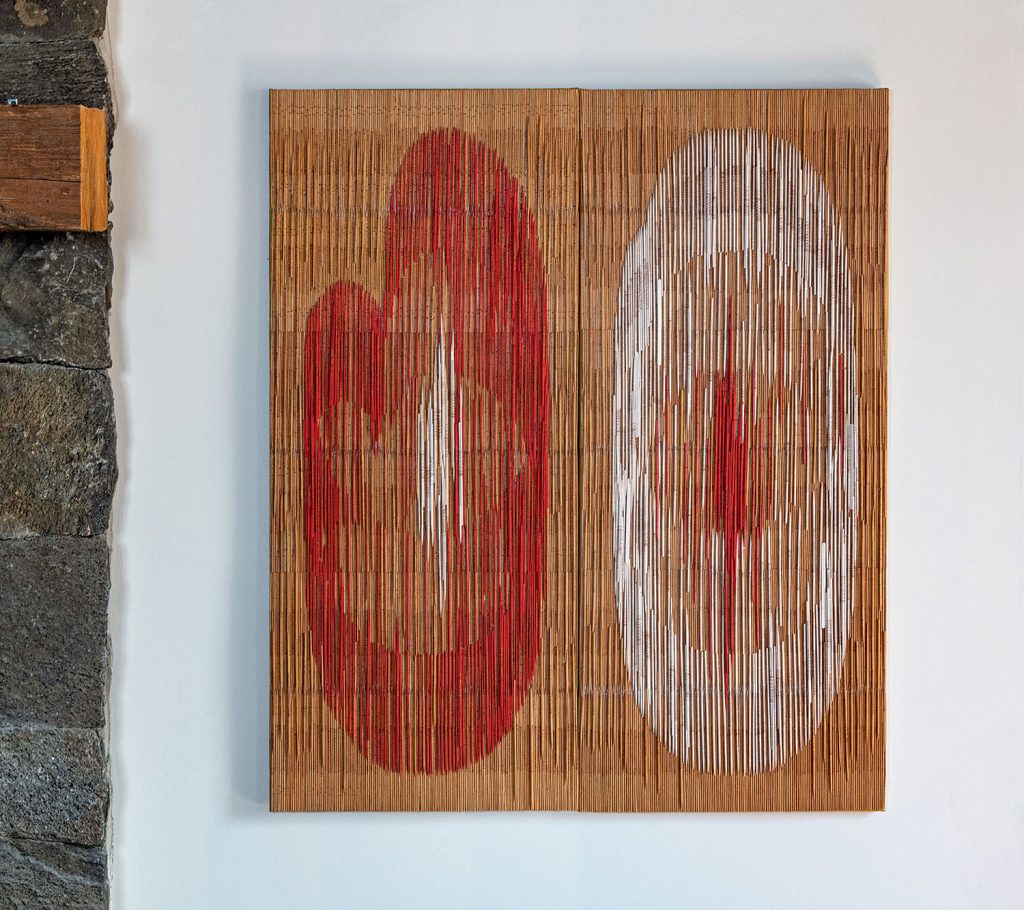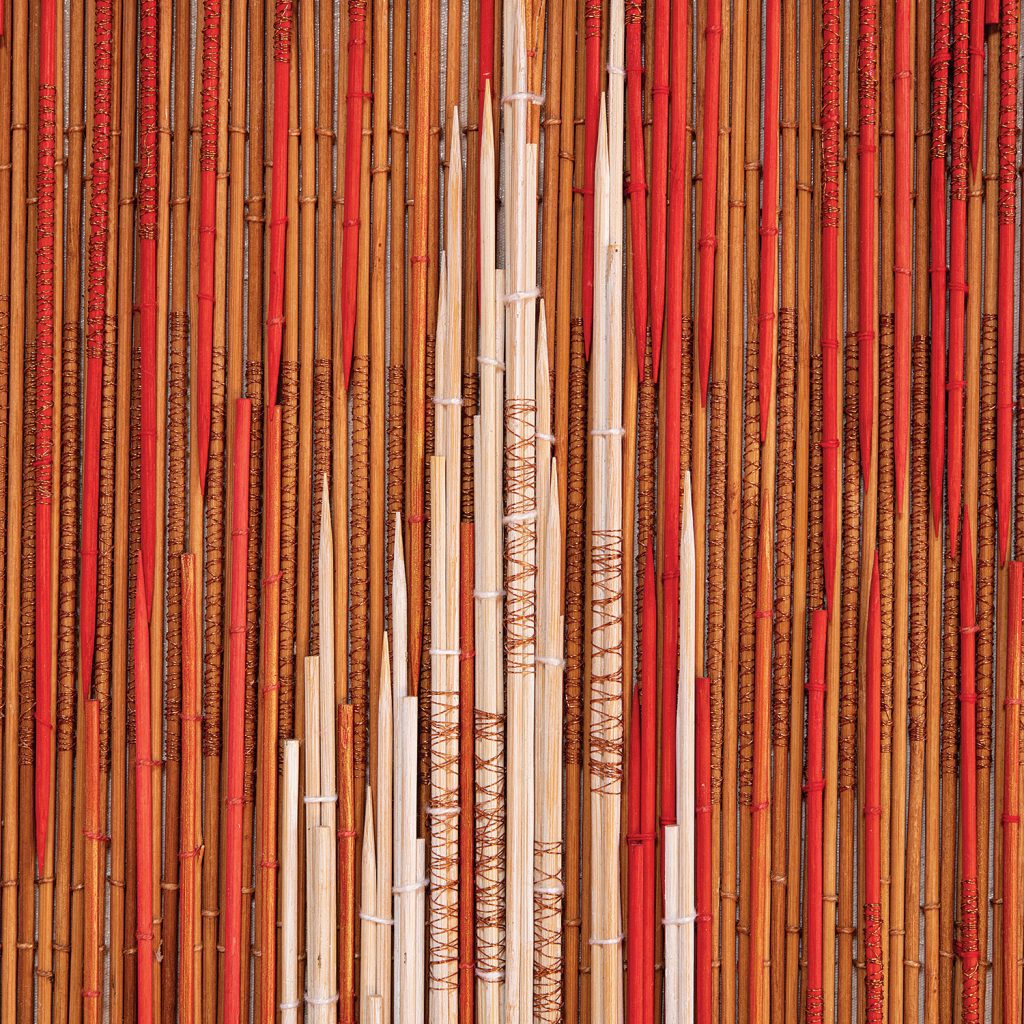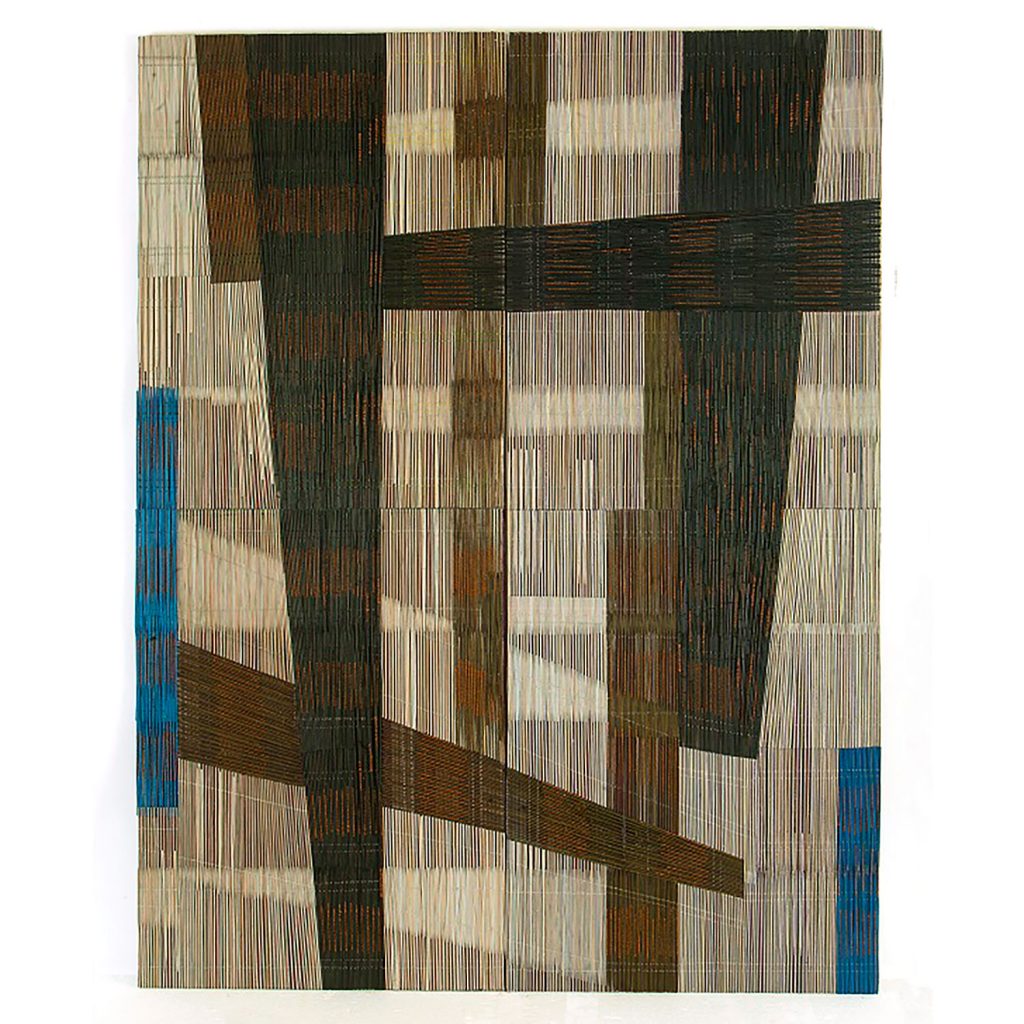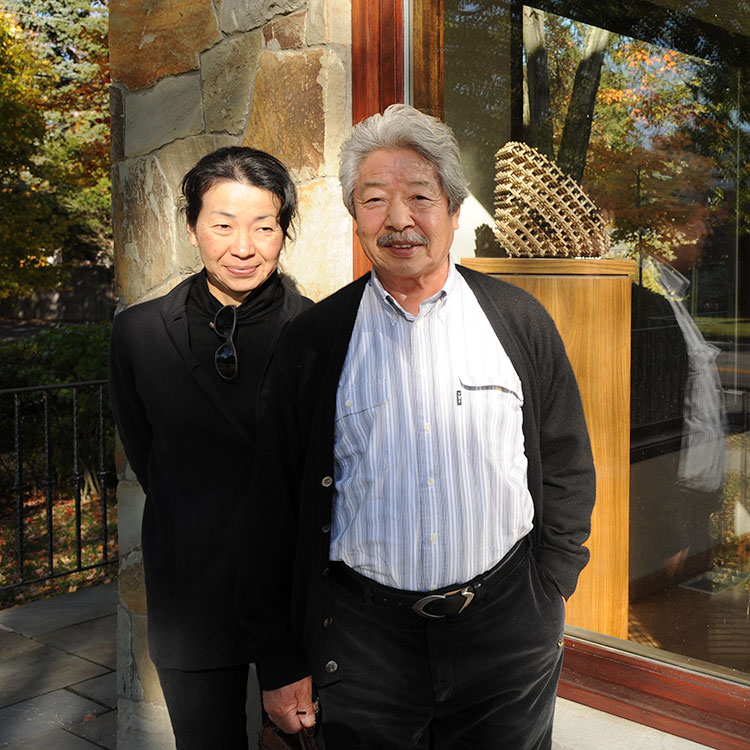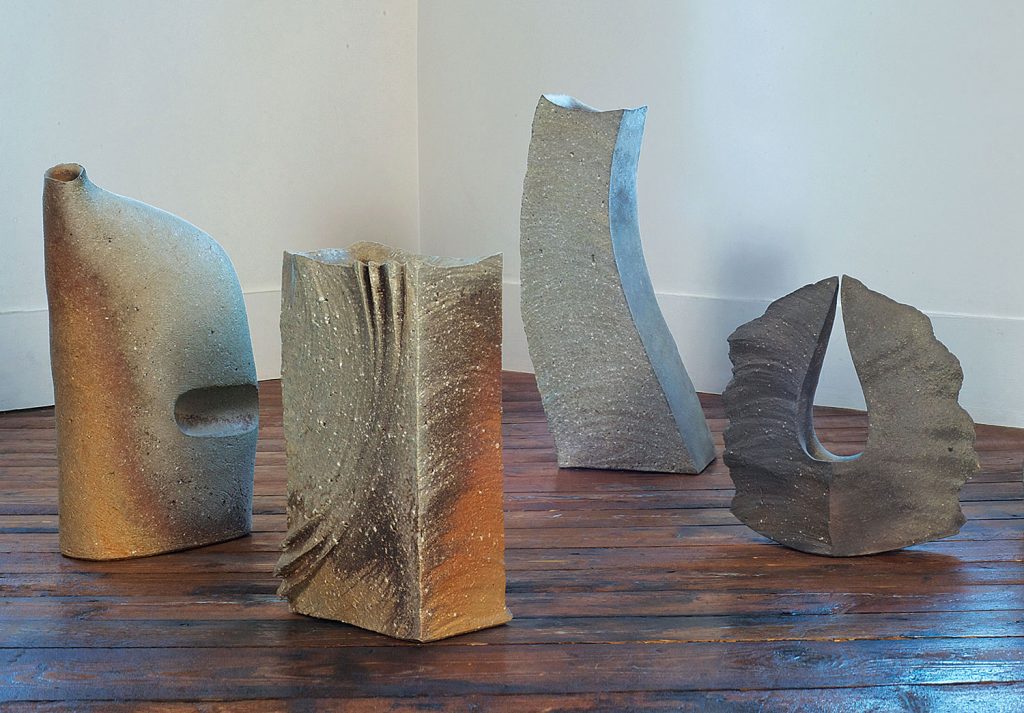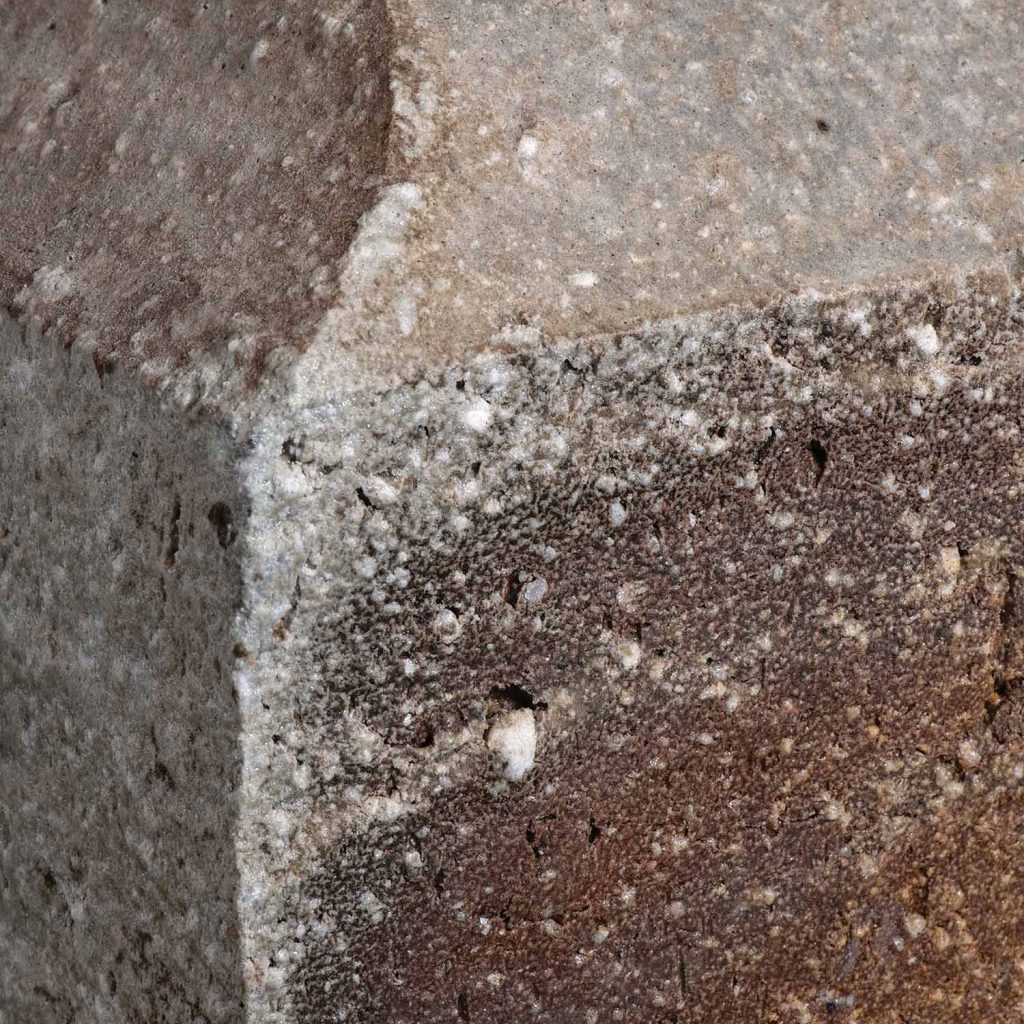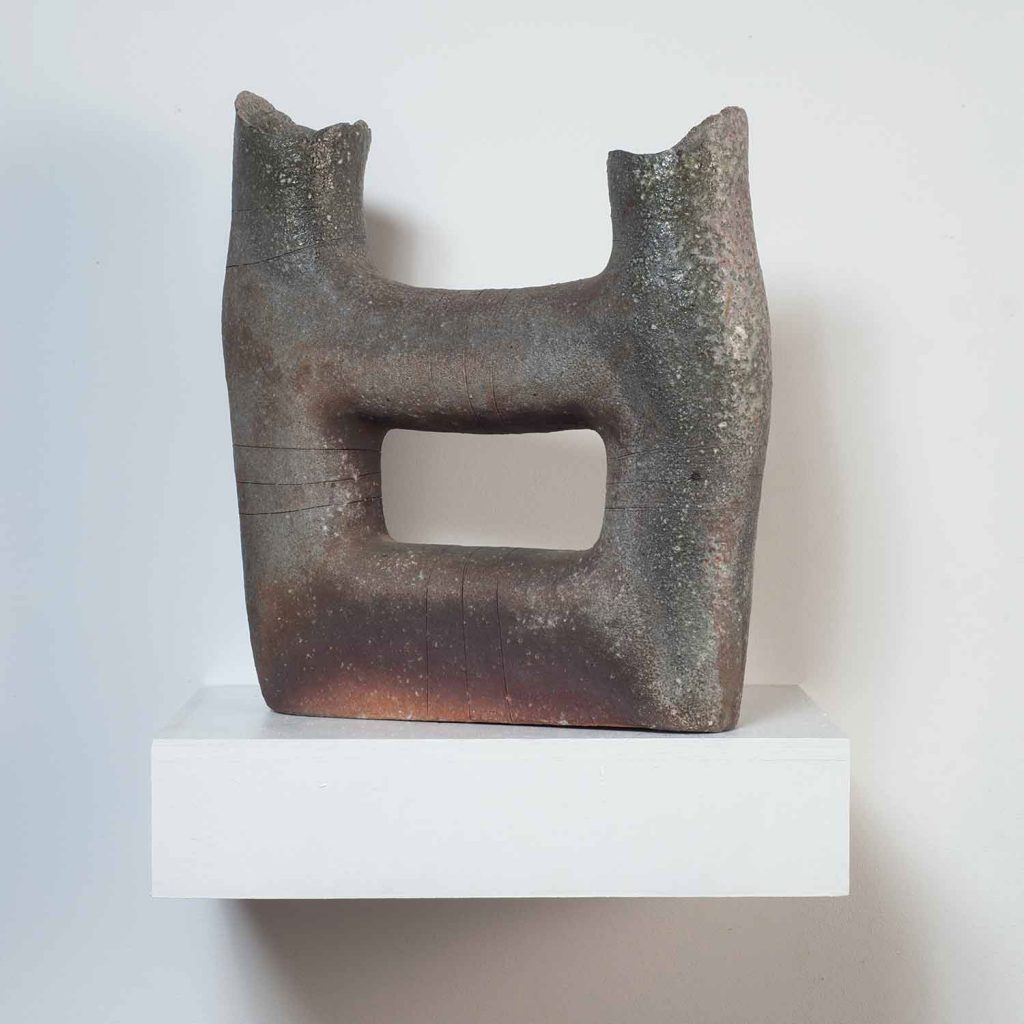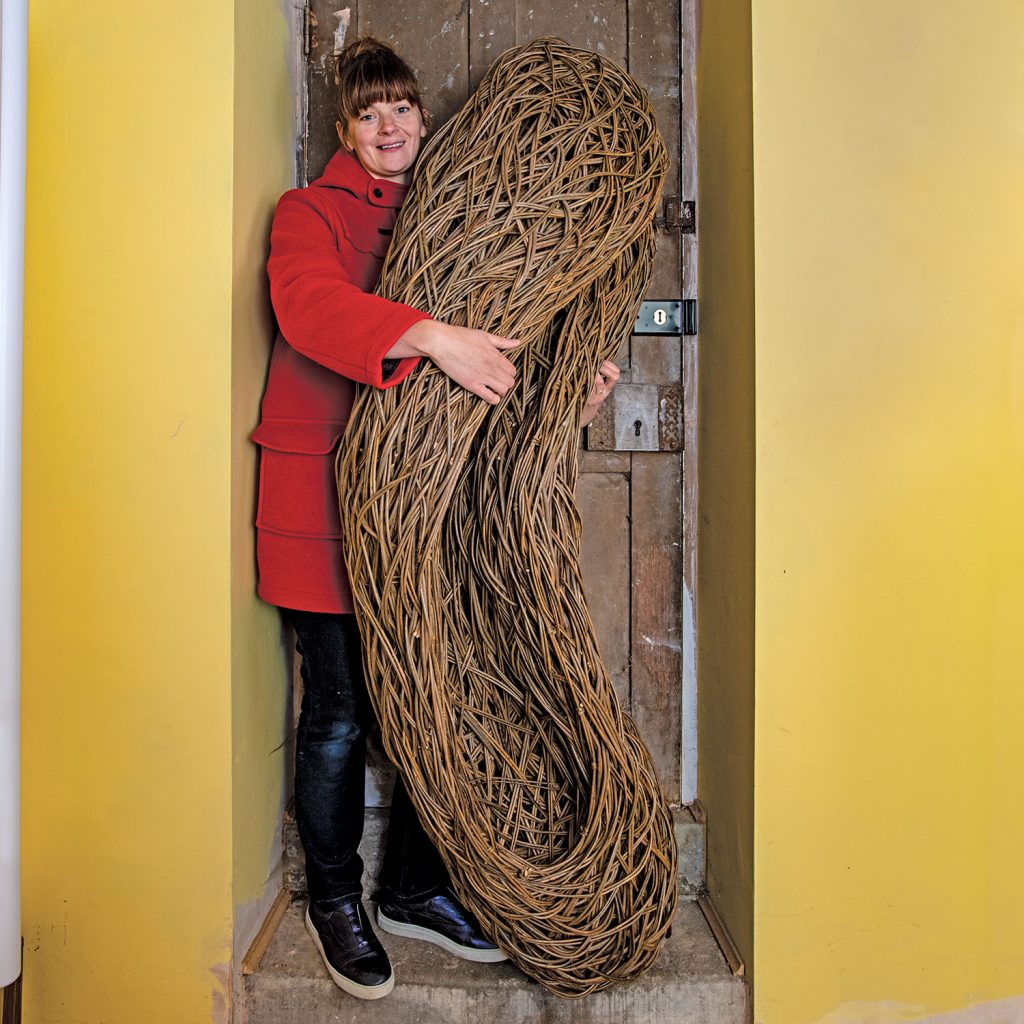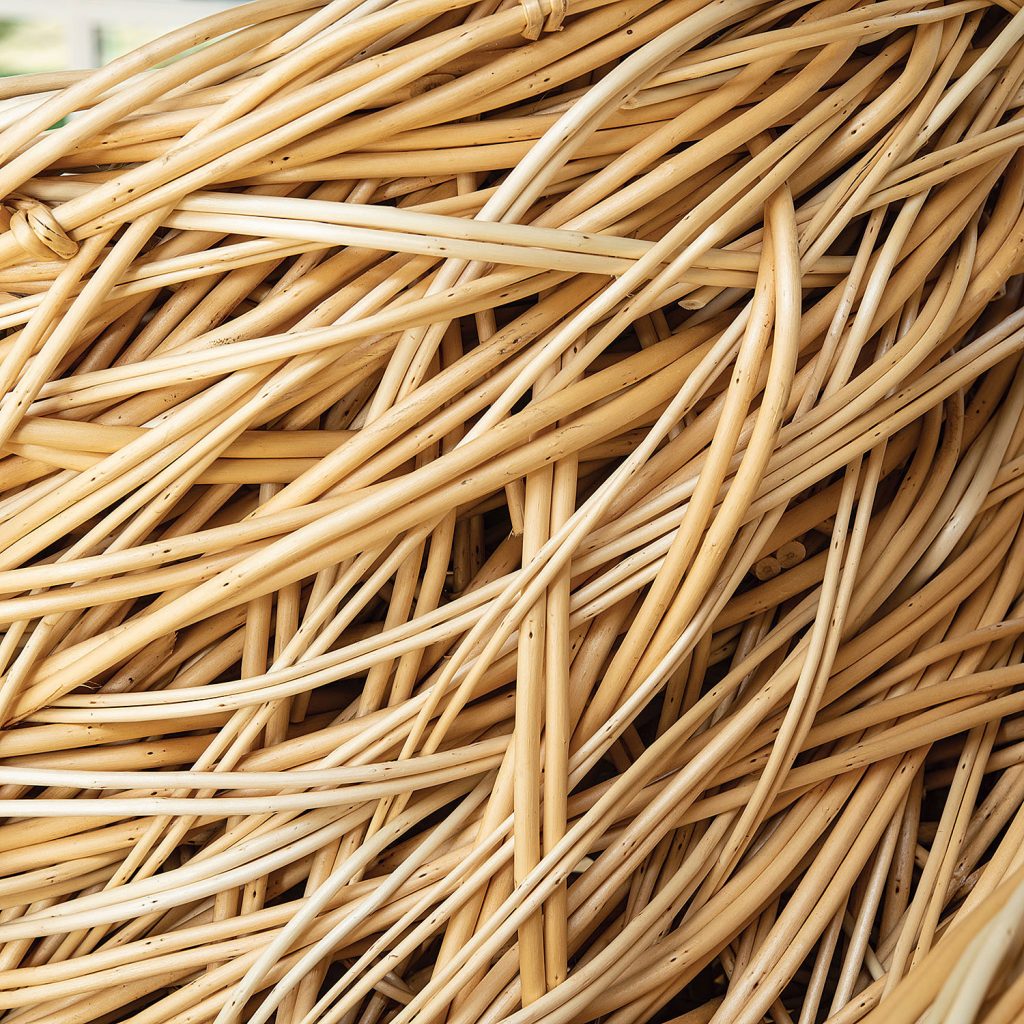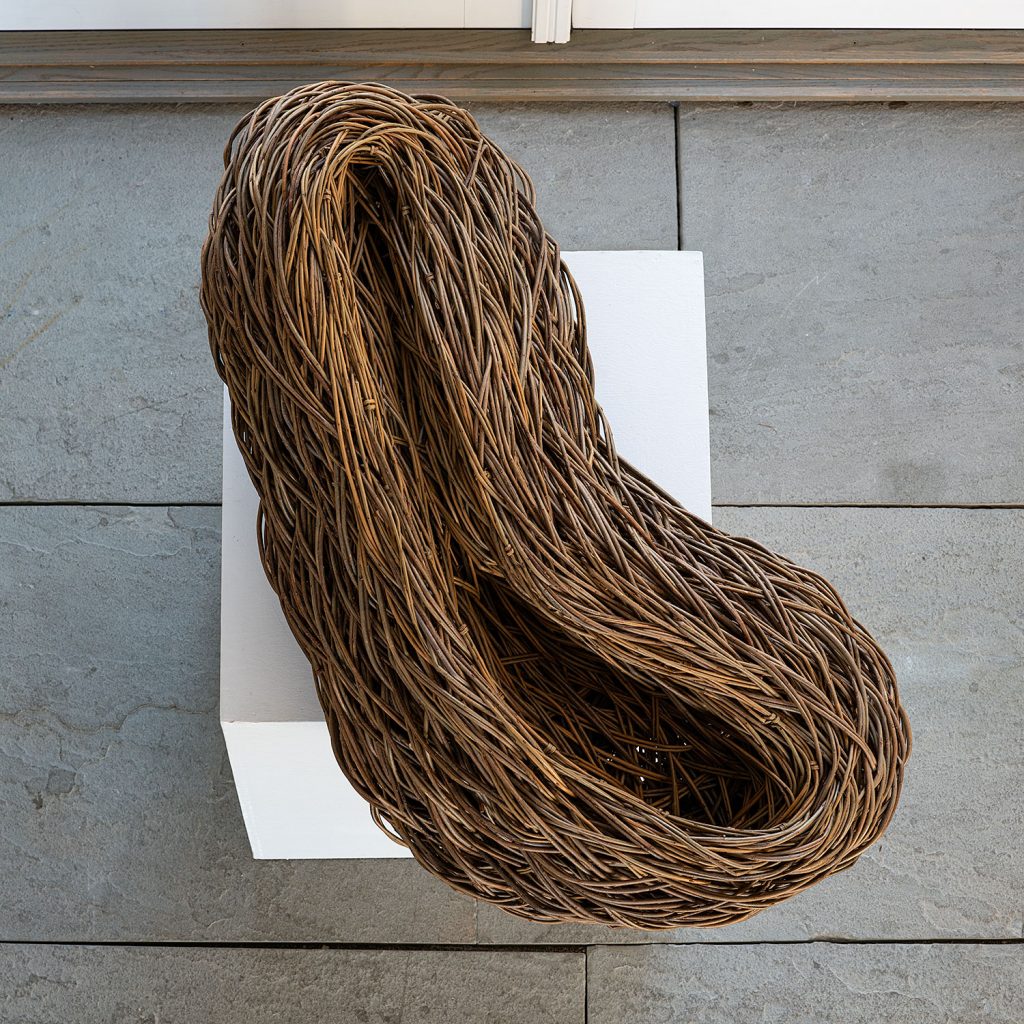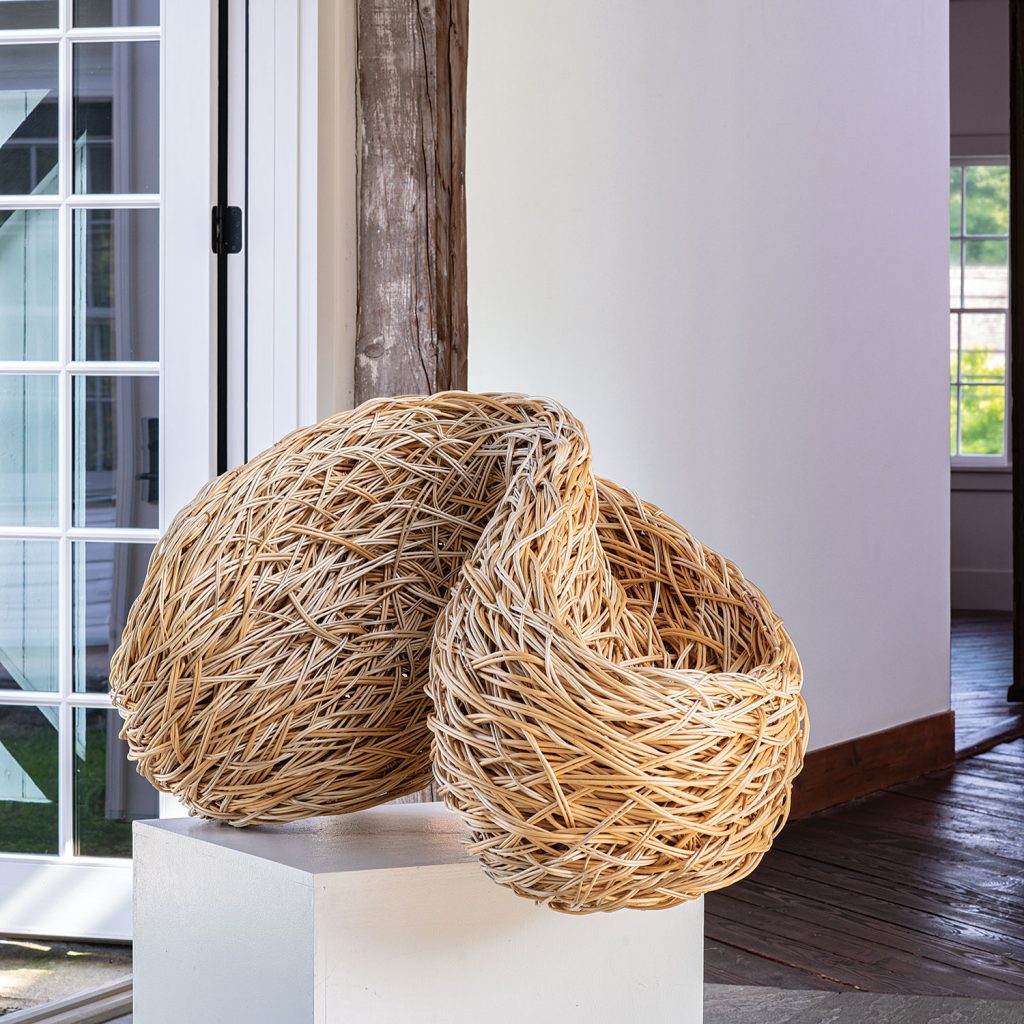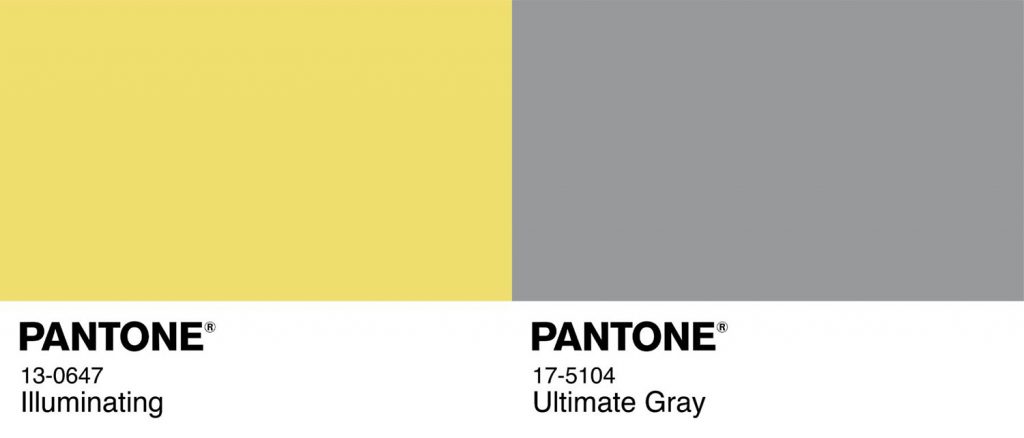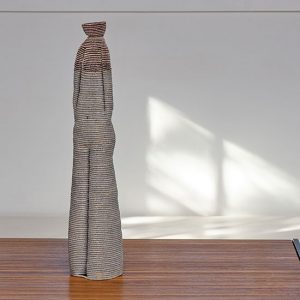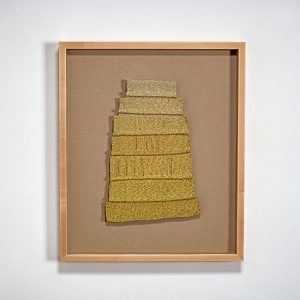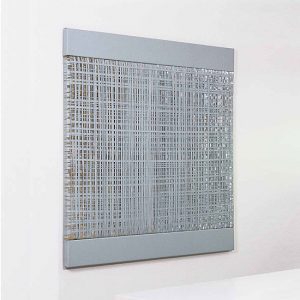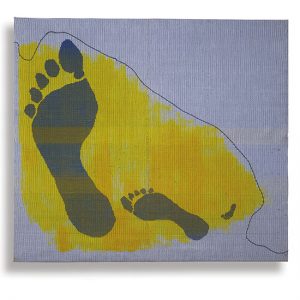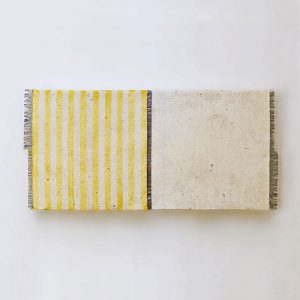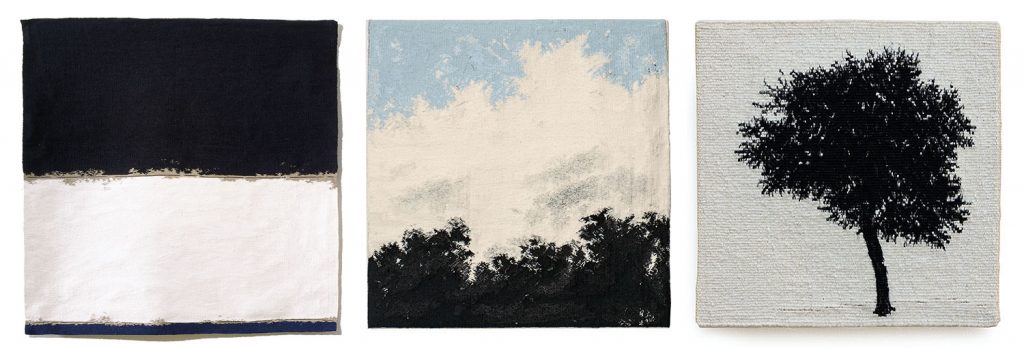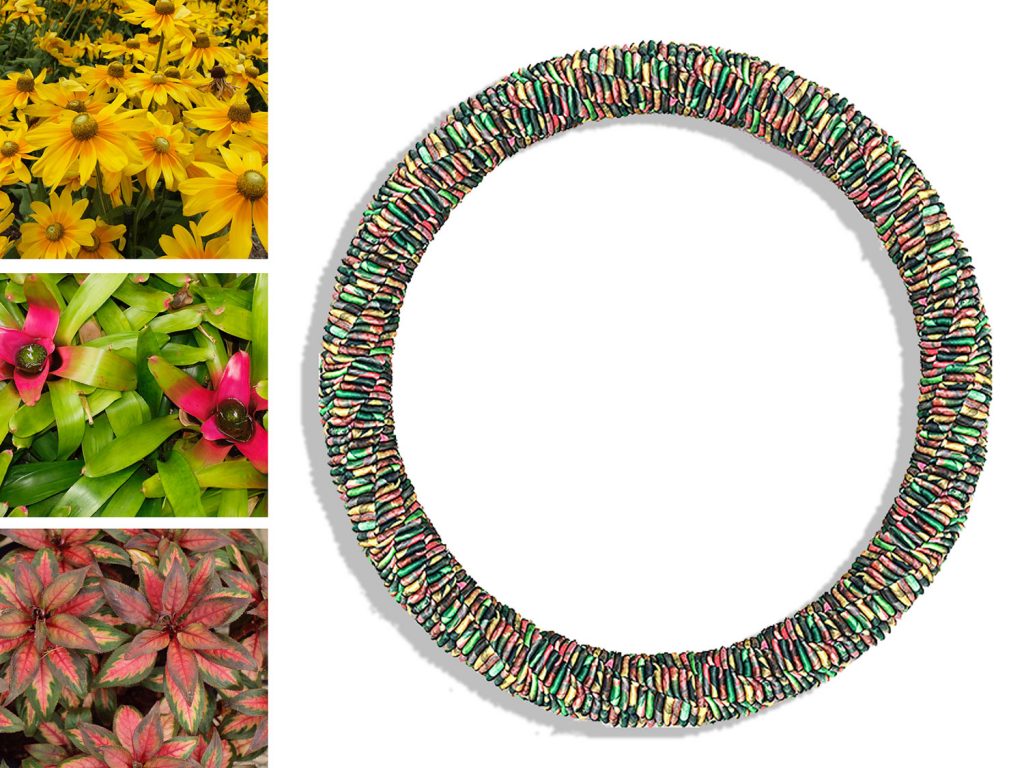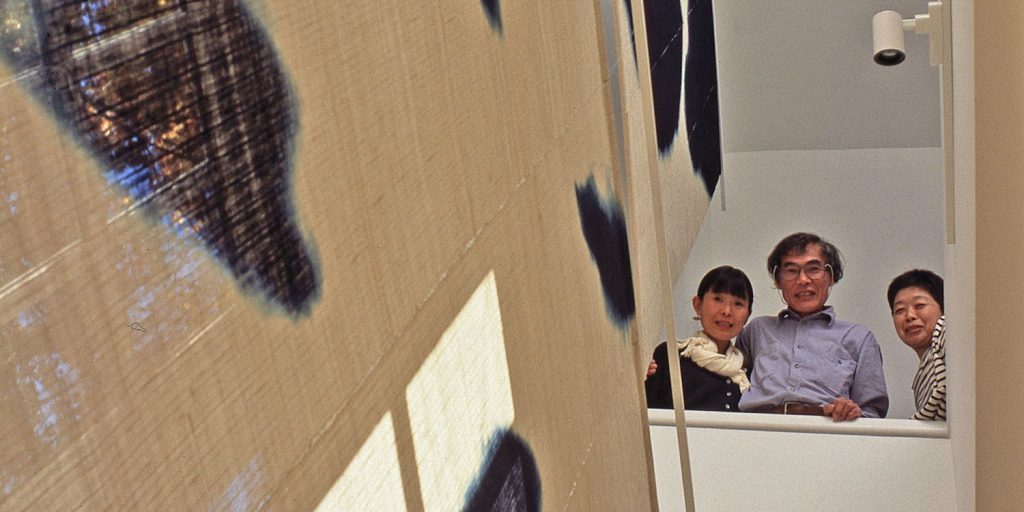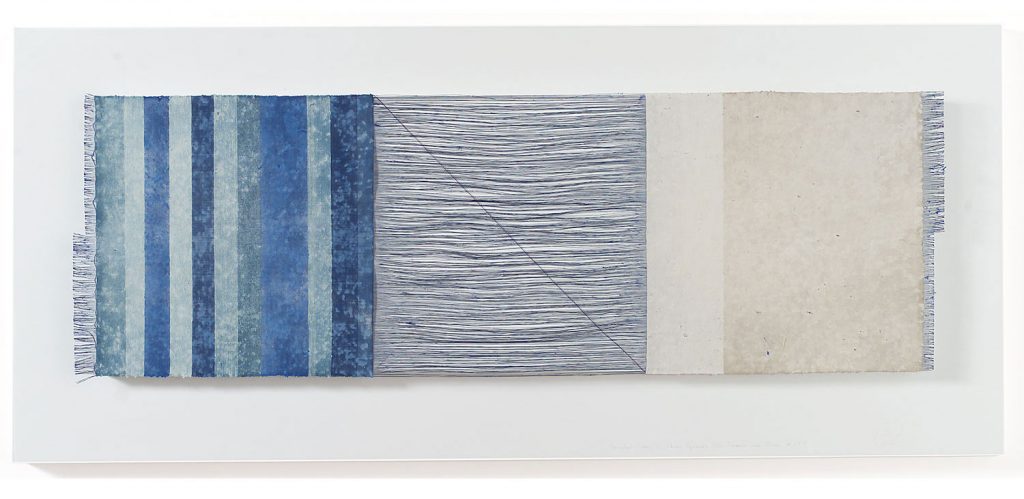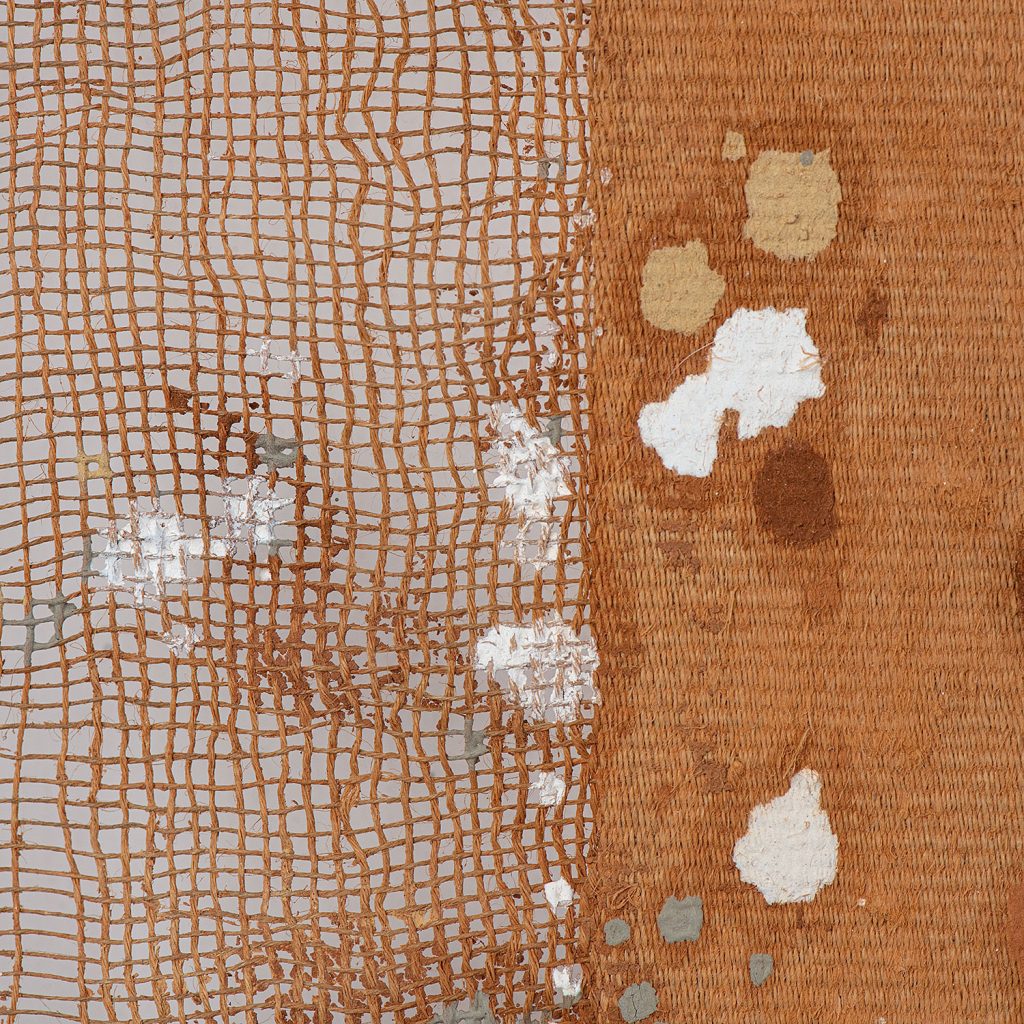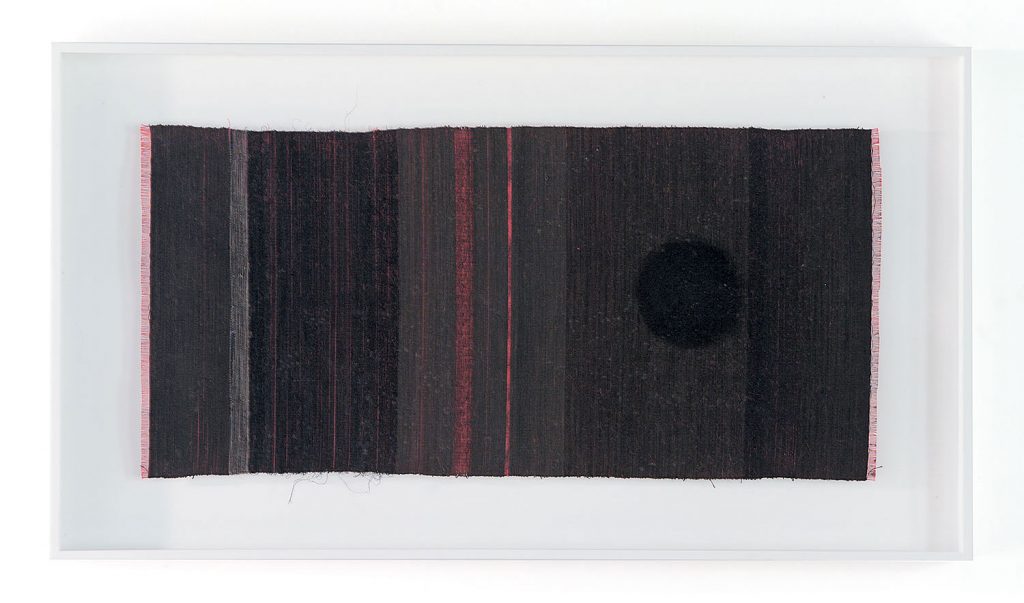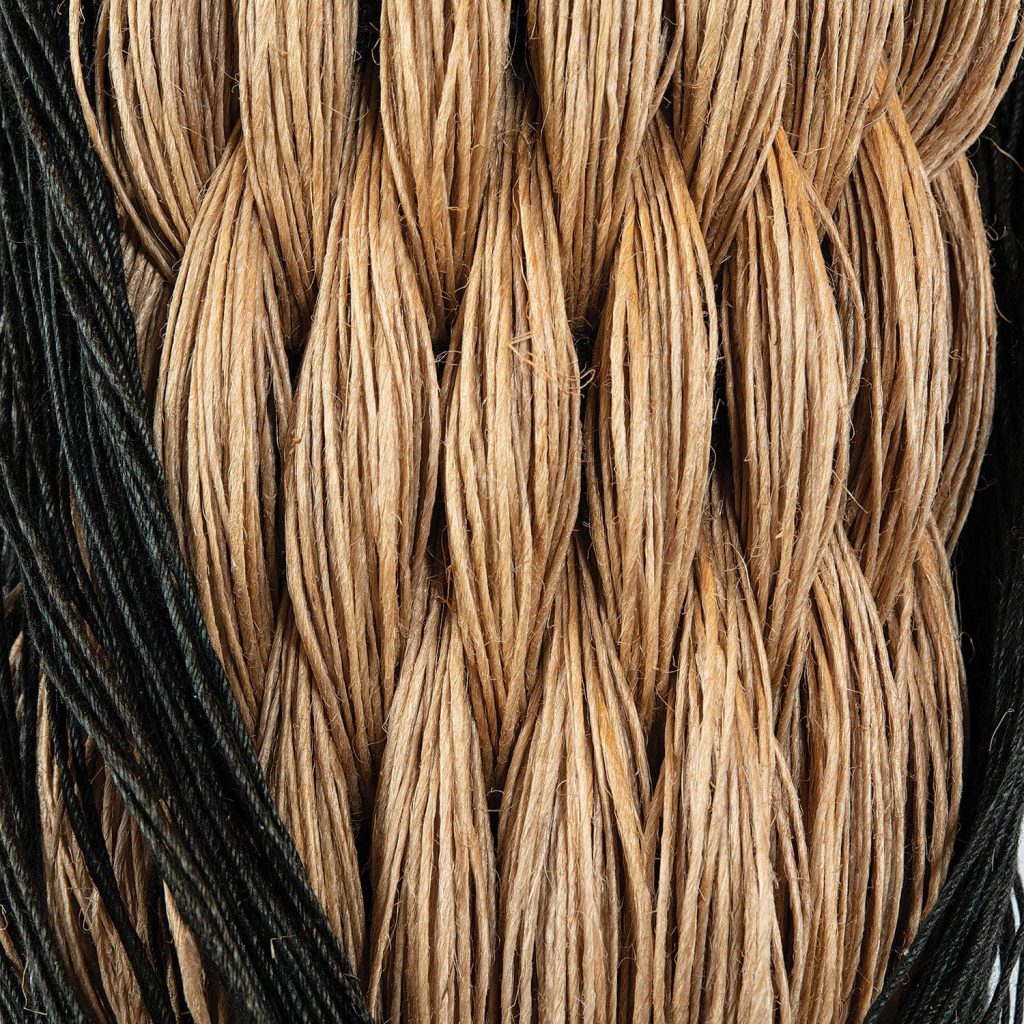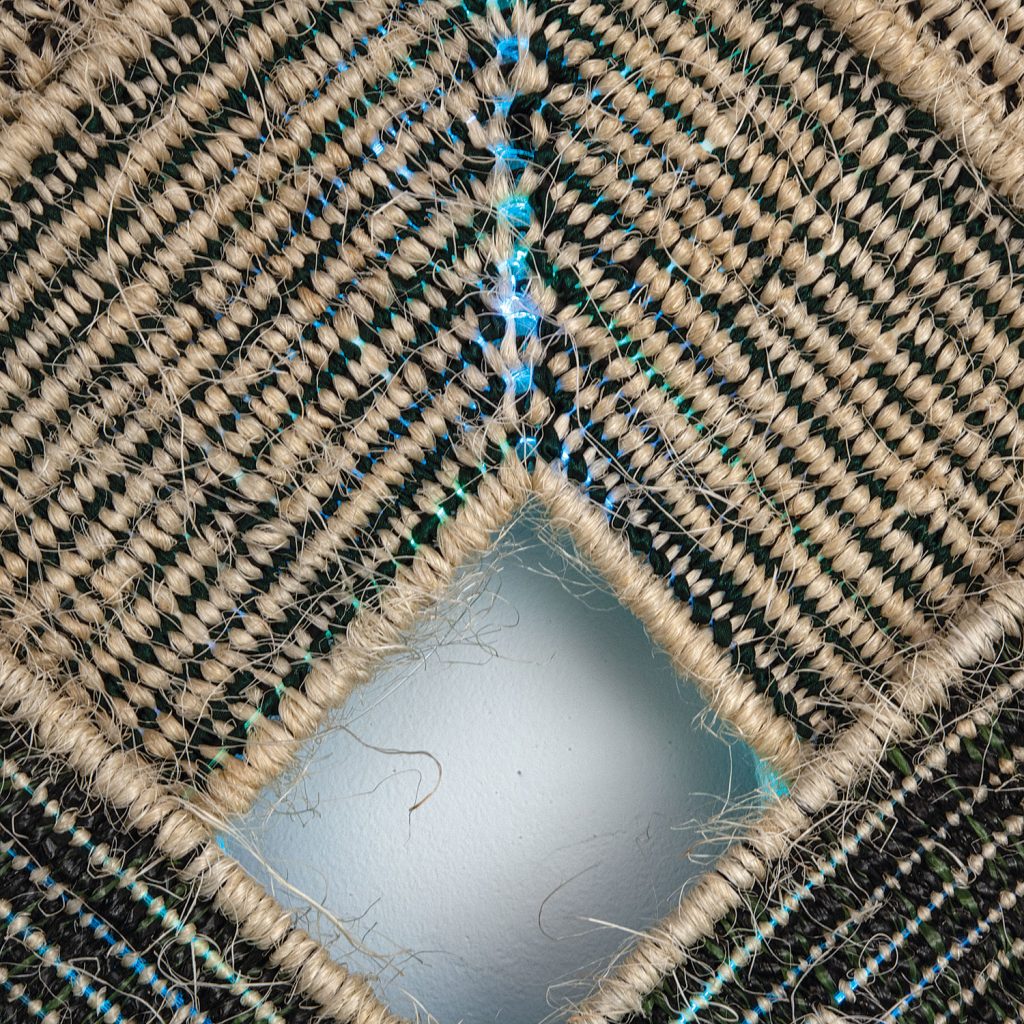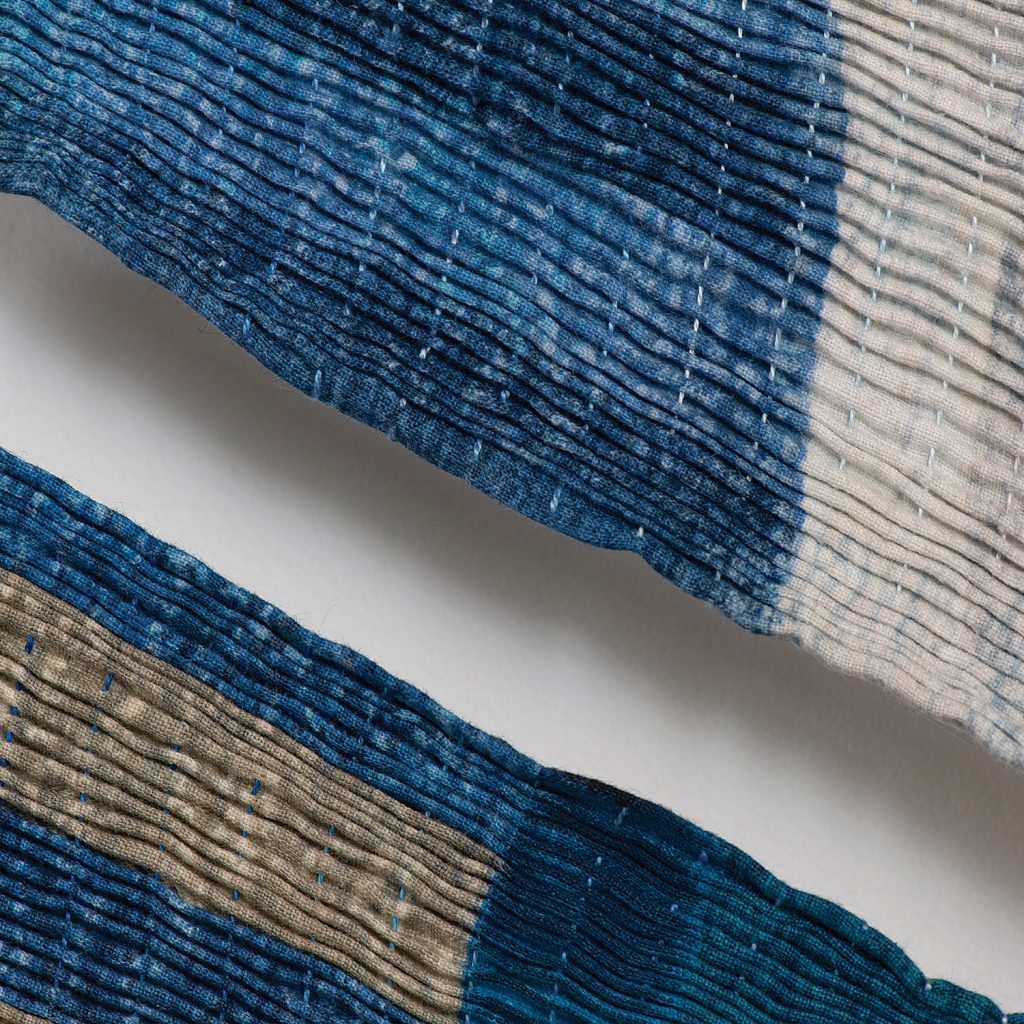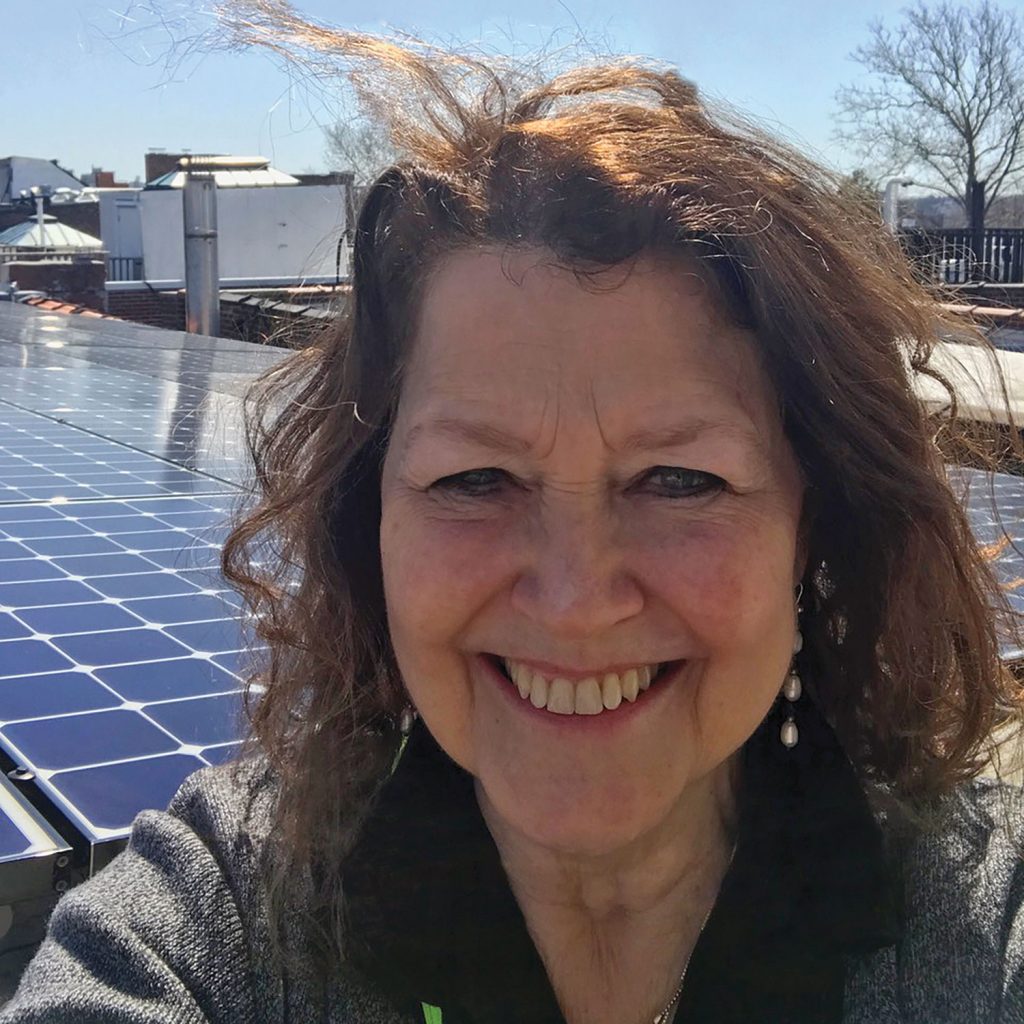
Blair Tate has explored flat woven grids in her work since the 70s. Her work evidences an “austere elegance,” Jack Lenor Larsen and Mildred Constantine observed in the seminal The Art Fabric: Mainstream in 1985. “I began weaving in the early 70s, under the influence of 60s Minimalism and modernist architecture,” she wrote in 1986. “I believed that form should follow function and accordingly I sought an objective basis for my work. In this, I was reacting against the majority of the weavnig I saw at the time: weaving that seemed either unfocused and overwhelmed by an eruption of materials, or myopically and exclusively concerned with complex technique …. I determined that my work in fiber should come from fiber and celebrate the medium.”
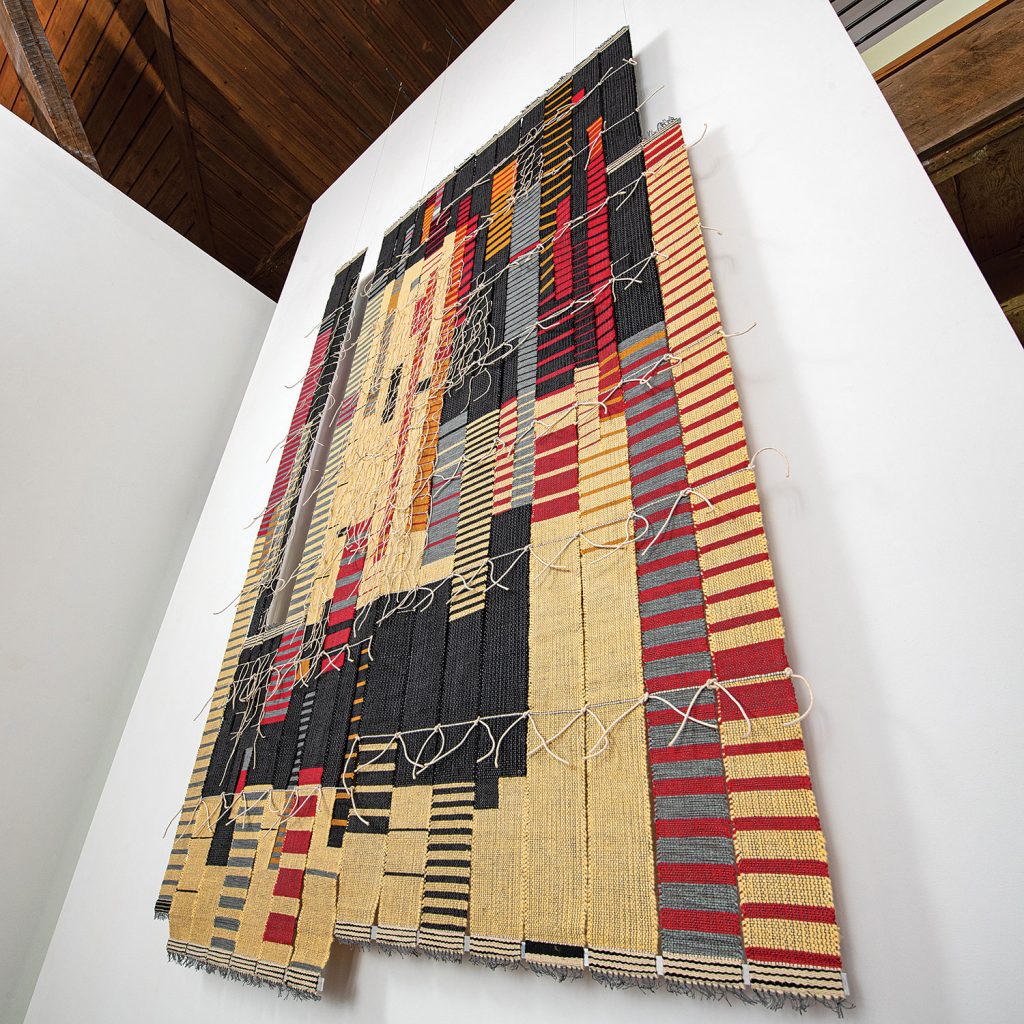
To compose her works, Tate creates modular units of woven linen strips tied together with cotton cords. The knots that result create an additional pattern — what Tate considers a scaffold for the tapestry, producing a second complicating scrim. She sees an analogy between textile and text. The strips are like sentences that can be edited, “rearranged to re-contextualize, to forge relationships, to develop meaning.” Her influences are diverse, African kente cloths “for their beauty and directness,” Baroque architecture, Berber carpets, Italo Calvino’s, If on a Winter’s Night a Traveler, and an appreciation for Japanese order and symmetry, broken by natural variations. In addition to her weavings, she has worked as a commercial textile designer, authored The Warp: A Weaving Resource (New York: Van Nostrand Reinhold, 1984) which analyzes the elements of weaving, and in the past year, she has made masks for neighbors, friends and a local care center.
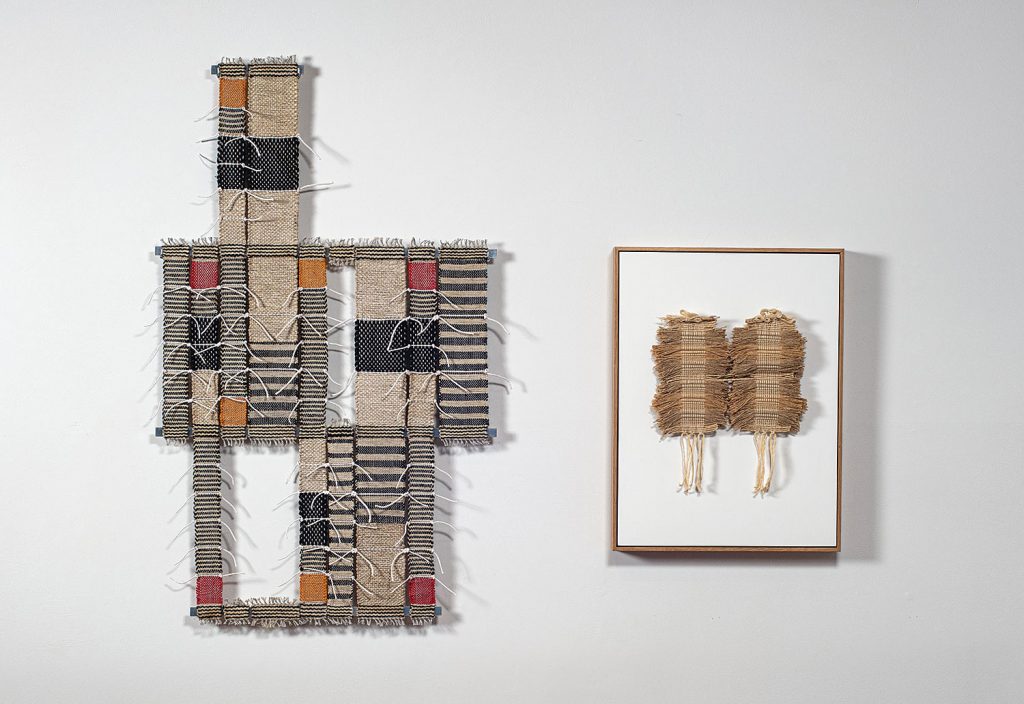
Small Gemelli, woven linen, spago (hemp). loosely constructed plaid. It exposes and clarifies each element of weaving – counted wefts follow a small doubling sequence within parallel warps which leave all weft ends exposed, 24.75” x 18.75” x 3.25”, 1977
In Adaptation: Artists Respond to Change this spring at browngrotta arts (May 8 -16), Tate will exhibit two works that explore her ideas about the warp. Small Gemelli (1977) was one of her earliest pieces to focus on the elements of weaving. It is a simple plaid – one of the most fundamental woven configurations – but opened to keep both warp and weft distinct. In Panagea, created this year, Tate consciously wove to the very limits of her warp to minimize loom waste. In the past, she says, “I might have incorporated interruptions in the strips while weaving, thereby wasting the unwoven warp; in Pangaea, the gaps emerge only in the rearranging.”
